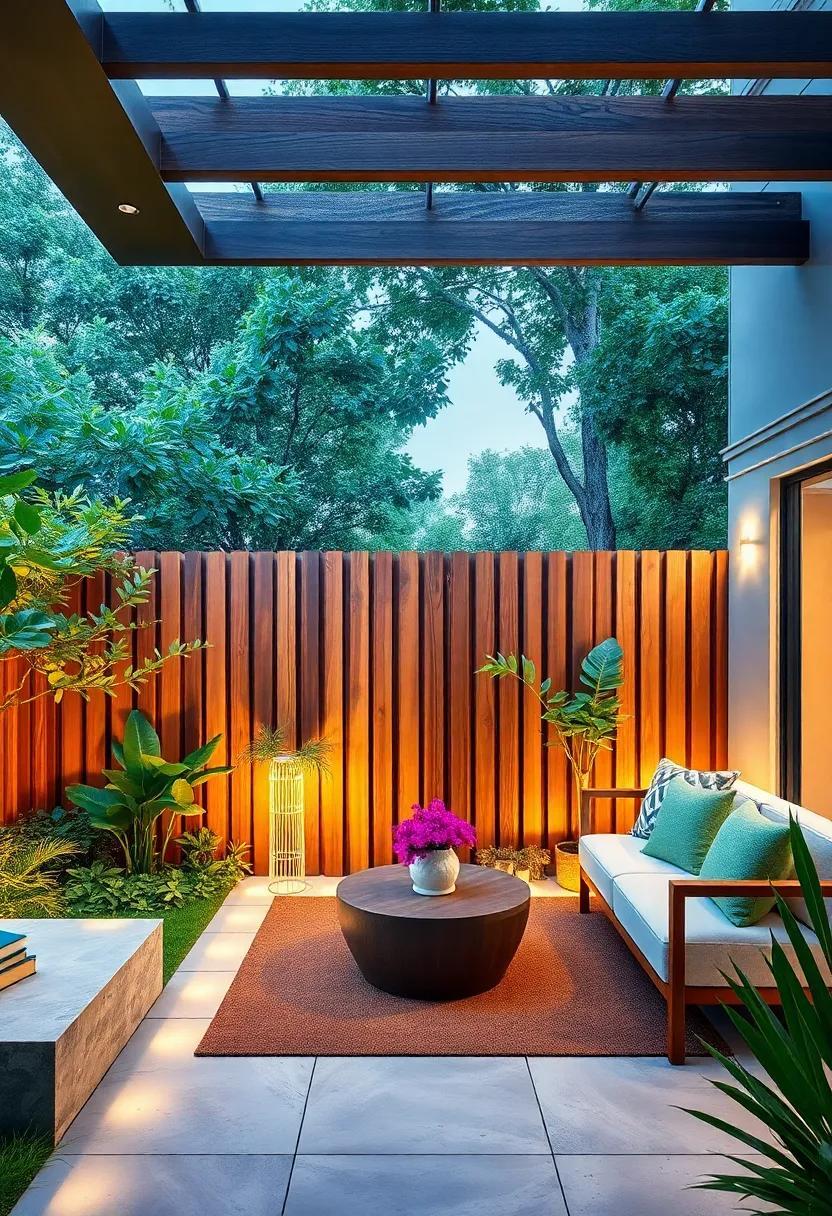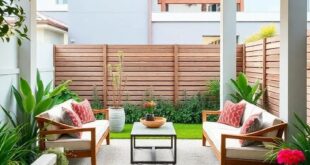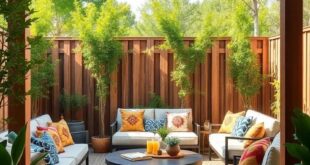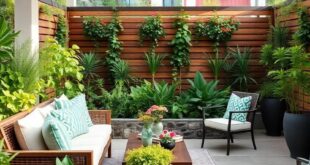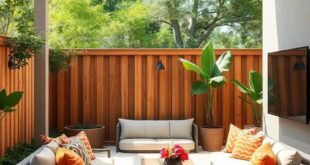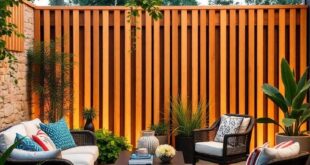In an age where the echoes of urban life often drown out the whispers of the natural world,a growing movement is inviting us to reconnect with the earth—one backyard at a time. As homeowners seek to cultivate not just gardens, but sanctuaries of serenity and sustainability, the way we define our outdoor spaces is undergoing a transformative shift. Enter eco-friendly garden fences, the unsung heroes in the quest for green living. These innovative boundaries do more than delineate property lines; they embody a commitment to environmental stewardship while enhancing the beauty and functionality of our gardens. From recycled materials to living walls, the latest trends in garden fencing are a testament to creativity, responsibility, and a deepening appreciation for the habitat.Let us explore how embracing nature through thoughtful fencing choices is redefining our relationship with the great outdoors, one fence at a time.
Embracing Sustainable Materials for Modern Garden Fencing Designs
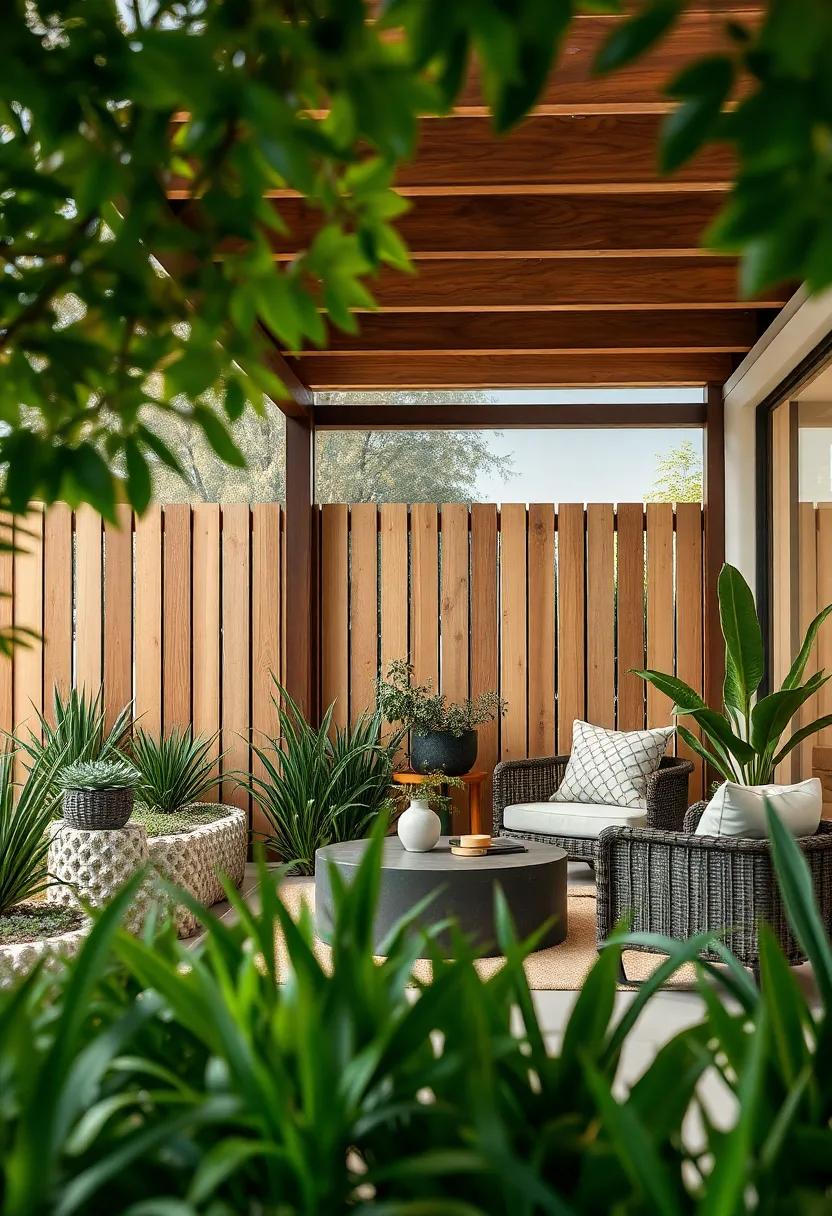
In today’s environmentally conscious world,garden fencing is evolving to incorporate sustainable materials that not only enhance the aesthetic appeal of outdoor spaces but also promote ecological balance. Homeowners are increasingly turning to options such as recycled wood, bamboo, and composite materials. These materials offer durability while minimizing the environmental impact often associated with conventional fencing. For instance, bamboo grows rapidly and can be harvested sustainably, while recycled wood helps reduce waste, giving a second life to materials that would otherwise end up in landfills.
Choosing eco-friendly fencing options comes with a variety of benefits, including enhanced aesthetics, affordability, and contribution to a more sustainable lifestyle. here are some popular sustainable materials for modern fencing:
- Reclaimed Wood: Sourced from old buildings or pallets, this wood provides a rustic charm.
- Bamboo: A fast-growing grass that is naturally resistant to pests.
- Composite Fencing: Made from recycled plastics and wood fibers, offering longevity.
- Corten Steel: Durable and weather-resistant,developing a beautiful rust patina over time.
| Material | Benefits |
|---|---|
| Reclaimed Wood | eco-conscious, distinctive character |
| Bamboo | Fast-growing, sustainable |
| Composite | Low maintenance, long-lasting |
| Corten Steel | Highly durable, unique appearance |
By embracing these innovative solutions, homeowners can create striking borders that complement their gardens while championing sustainability. The trend of integrating nature into design is not only a testament to a shift in consumer preferences but also stems from a growing recognition of our responsibility to protect the environment.
The Aesthetic Appeal of Natural Wood in Eco-Friendly Garden Fences
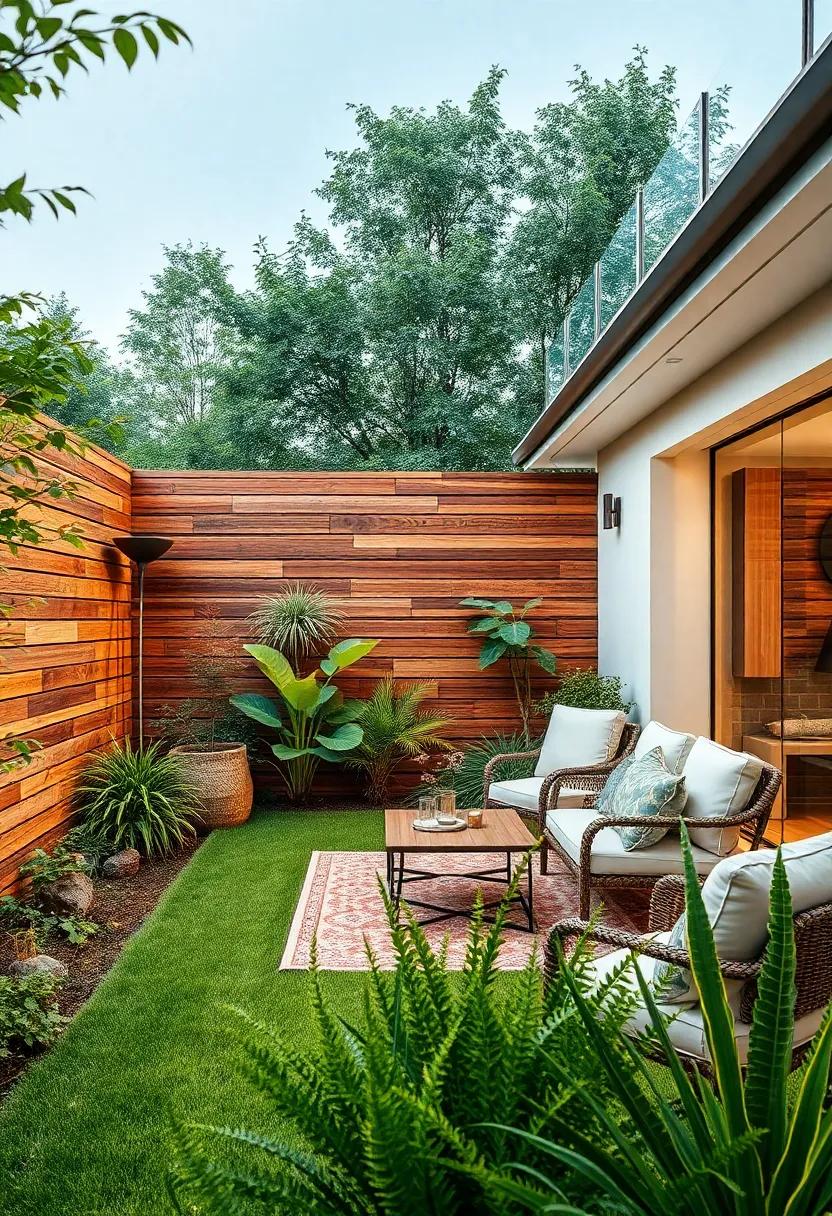
Natural wood possesses an inherent warmth and beauty that can effortlessly enhance the aesthetic of any garden space. Its unique grain patterns, rich textures, and organic hues bring a distinct charm that manufactured materials simply cannot replicate. When incorporated into garden fences, wood not only delineates boundaries but also serves as a canvas that complements the surrounding landscape. From rustic cedar to elegant oak, the variety of wood options allows for versatility, accommodating styles from contemporary minimalism to vintage coziness. The visual appeal of wood is further elevated when it ages gracefully, developing a character all its own that resonates with the principles of sustainability.
Moreover, the tactile experience offered by natural wood creates a harmonious connection between the built environment and nature. Fences made of eco-friendly materials can also contribute to improved biodiversity by providing natural habitats for local wildlife.They can be adorned with climbing plants, which adds vertical interest and a splash of colour, seamlessly integrating them into the garden’s ecosystem. When selecting wood for garden fences, consider options that are sourced sustainably and treated with non-toxic finishes, which not only protect the material but also align with the ethos of eco-friendliness:
- Cedar: Naturally resistant to decay and insect damage.
- Redwood: Renowned for its rich color and durability.
- Douglas Fir: An affordable option that blends well into nature.
- Bamboo: A fast-growing renewable resource with high tensile strength.
| Wood type | Benefits | Sustainability |
|---|---|---|
| Cedar | Resistance to decay | Renewable |
| Redwood | Longevity and aesthetic appeal | Slow-grown for viscosity |
| Bamboo | Strength and flexibility | Highly renewable |
Innovative Bamboo Fences: Combining Sustainability with Style
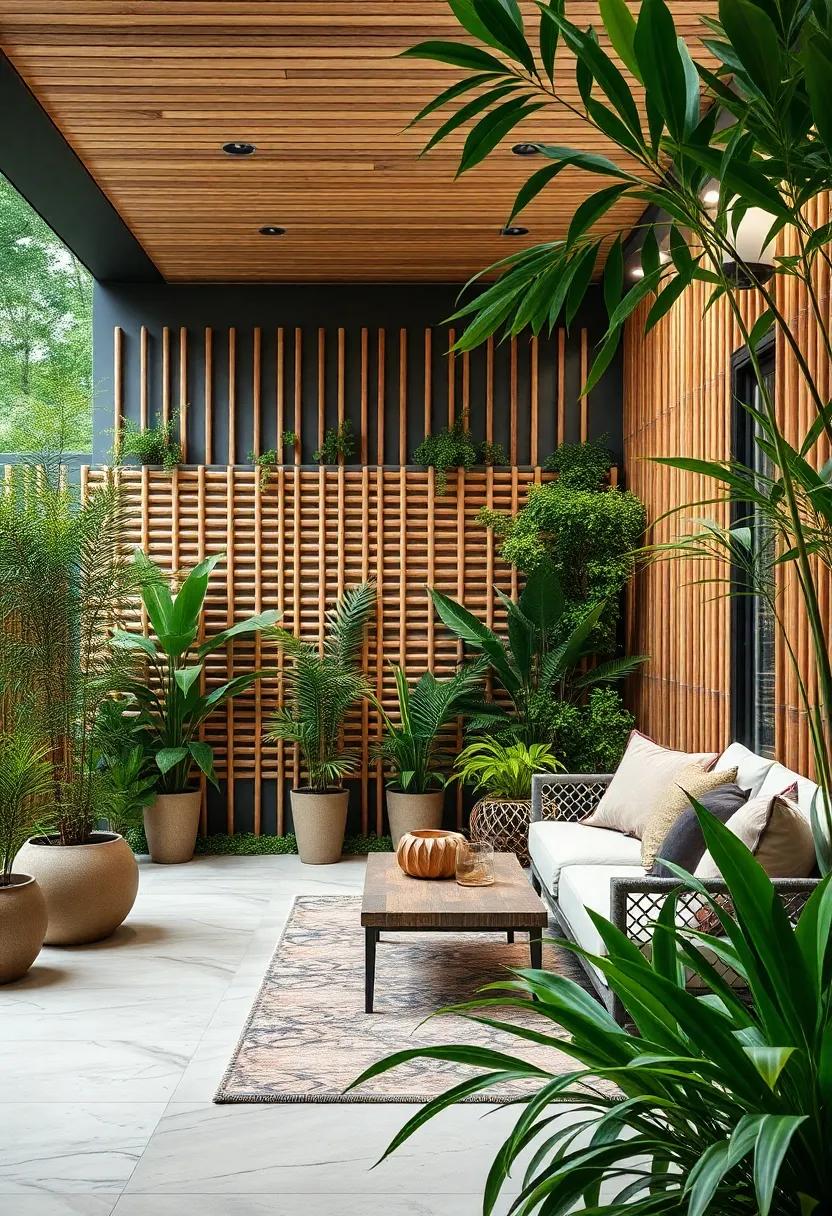
Bamboo fences are rapidly becoming the go-to choice for eco-conscious homeowners seeking to enhance their outdoor spaces with a touch of elegance. This innovative fencing solution marries sustainability with aesthetic appeal, offering a unique blend that not only supports environmental preservation but also adds character to gardens and backyards.With its natural resilience and rapid growth, bamboo stands as a testament to nature’s ability to provide sustainable materials that can withstand the elements while delivering a contemporary look that suits various design styles.
Incorporating bamboo into garden fencing allows for a wide range of design possibilities. Here are some key aspects that make bamboo an exceptional choice:
- Durability: Bamboo is naturally resistant to pests and decay.
- Versatility: Available in various styles,it can suit traditional,modern,or minimalist gardens.
- Eco-Friendliness: A renewable resource, bamboo grows quickly without the need for harmful pesticides.
- Easy Installation: Lightweight and manageable, bamboo panels can be installed with ease.
These factors make bamboo fencing not only a stylish choice but also a responsible one for those looking to make a statement about their commitment to the environment.As garden design continues to evolve, bamboo fences stand out as a prime example of how functionality and beauty can coexist in harmony with our natural surroundings.
Exploring Recycled Plastics in Contemporary Garden Fence Solutions
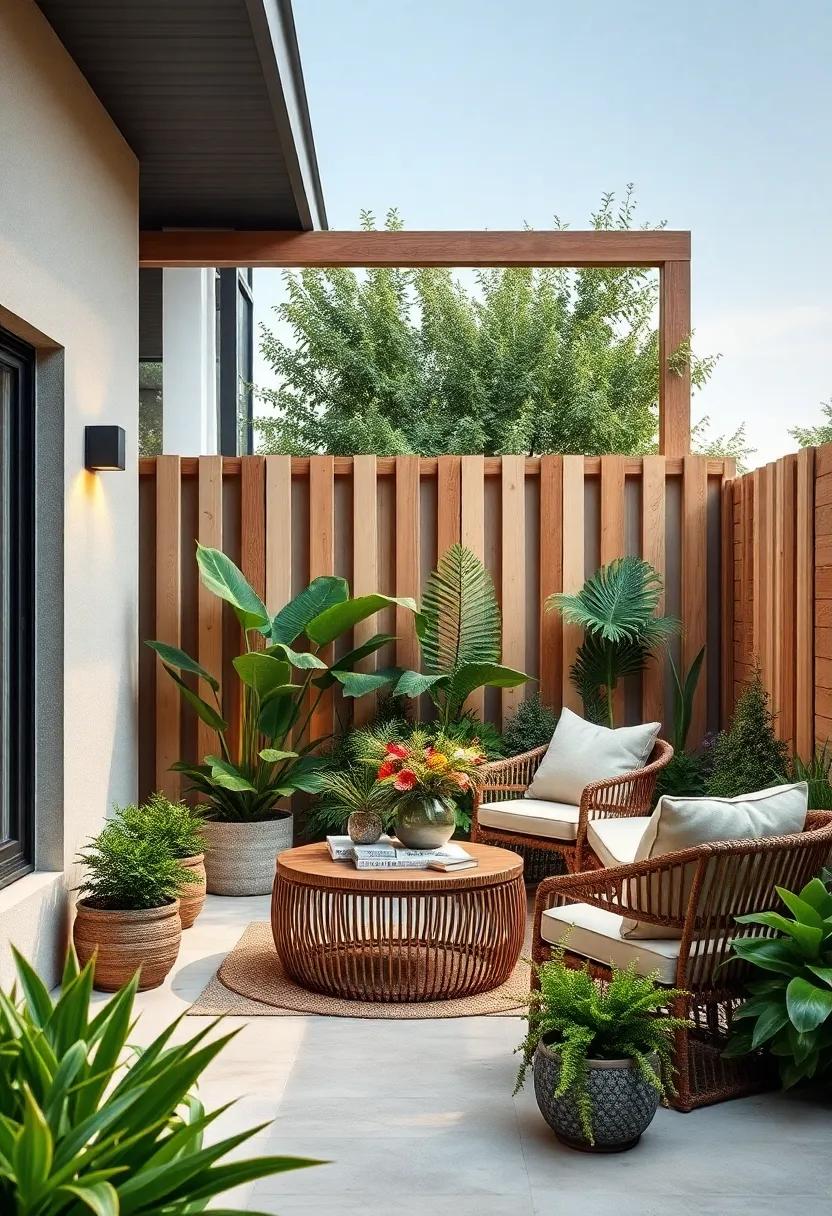
In the quest for sustainable landscaping, recycled plastics have emerged as a game-changer in the realm of garden fencing. Utilizing materials that were once thought to be waste, companies are now crafting sturdy, weather-resistant fences that not only serve a functional purpose but also enhance the aesthetic appeal of gardens. Advantages of recycled plastic fences include:
- durability: Resistant to rot, insects, and harsh weather conditions.
- Maintenance-Free: Unlike wood, they don’t require staining or sealing.
- Variety: Available in numerous colors and styles, mimicking traditional fencing materials.
Moreover,the impact of choosing recycled plastics extends beyond mere practicality; it symbolizes a commitment to environmental stewardship.Manufacturers are increasingly clear about their sourcing, showcasing how old bottles or containers can be transformed into innovative fence panels. To give a clearer picture of the benefits, consider the following environmental impact metrics:
| Material | Recycled Plastic | Traditional Wood |
|---|---|---|
| Lifetime | 30+ years | 10-15 years |
| Maintenance Requirements | Low | High |
| Environmental Impact | Reduces landfill waste | Deforestation concerns |
integrating Living Fences: A Green Approach to Boundary Defining
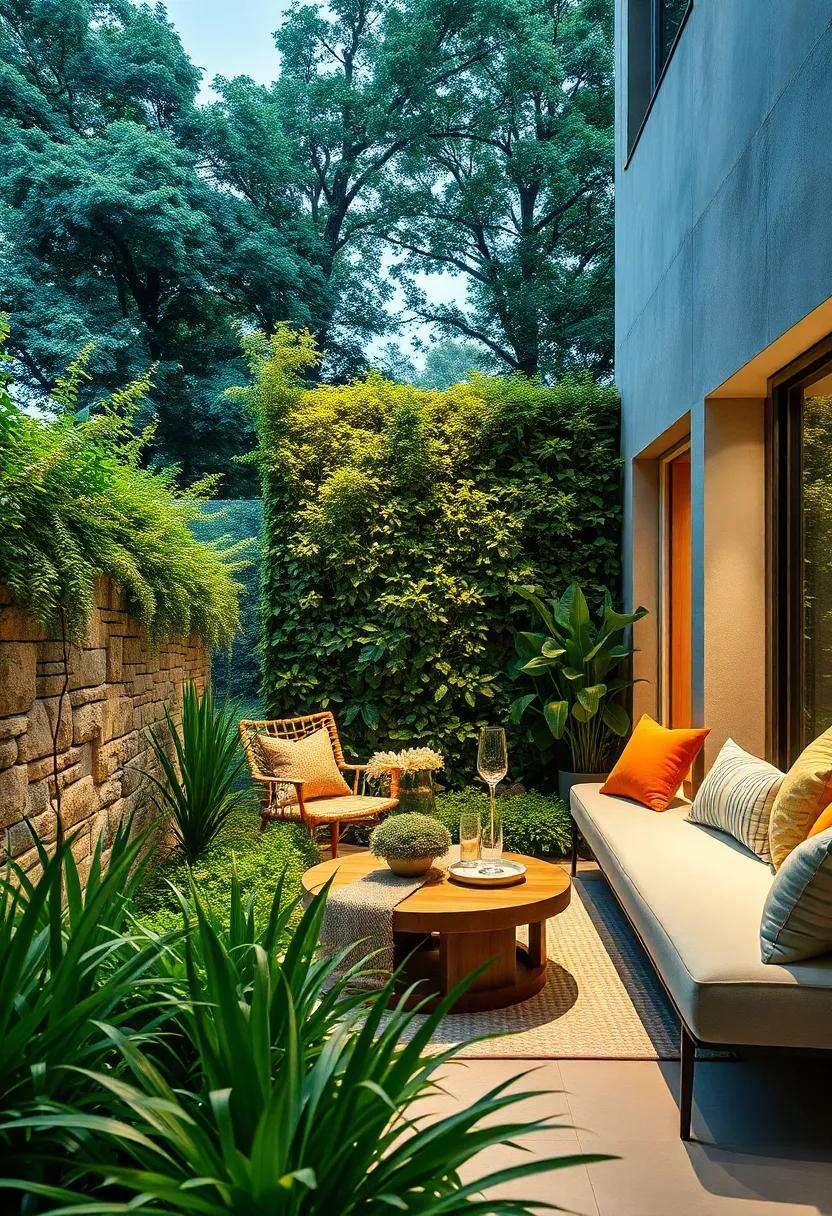
Integrating living fences into your garden design offers a remarkable way to define boundaries while fostering an eco-friendly environment. By choosing native plants, you not only create a green barrier but also support local wildlife, providing shelter and food for birds and beneficial insects.Some popular options for living fences include:
- Hedges: Such as boxwood or privet, ideal for creating dense, low-maintenance walls.
- Vines: Climbing plants like honeysuckle or clematis can easily cover trellises or arbors.
- Trees: Species like hawthorn or cherry can form a more considerable boundary while offering seasonal beauty.
Implementing these natural solutions encourages biodiversity and reduces the carbon footprint compared to traditional wooden or metal fences.Additionally, living fences can adapt over time, thriving in different conditions while providing privacy and aesthetic appeal. Consider the following table to help with your selection:
| Plant Type | Growth Rate | Maintenance Level | Wildlife Benefits |
|---|---|---|---|
| Boxwood | Medium | Low | Bird haven |
| Honeysuckle | Fast | Medium | Attracts hummingbirds |
| Hawthorn | slow | Low | Essential for bees |
the Benefits of Using Stone and Brick for Eco-Conscious Garden Borders
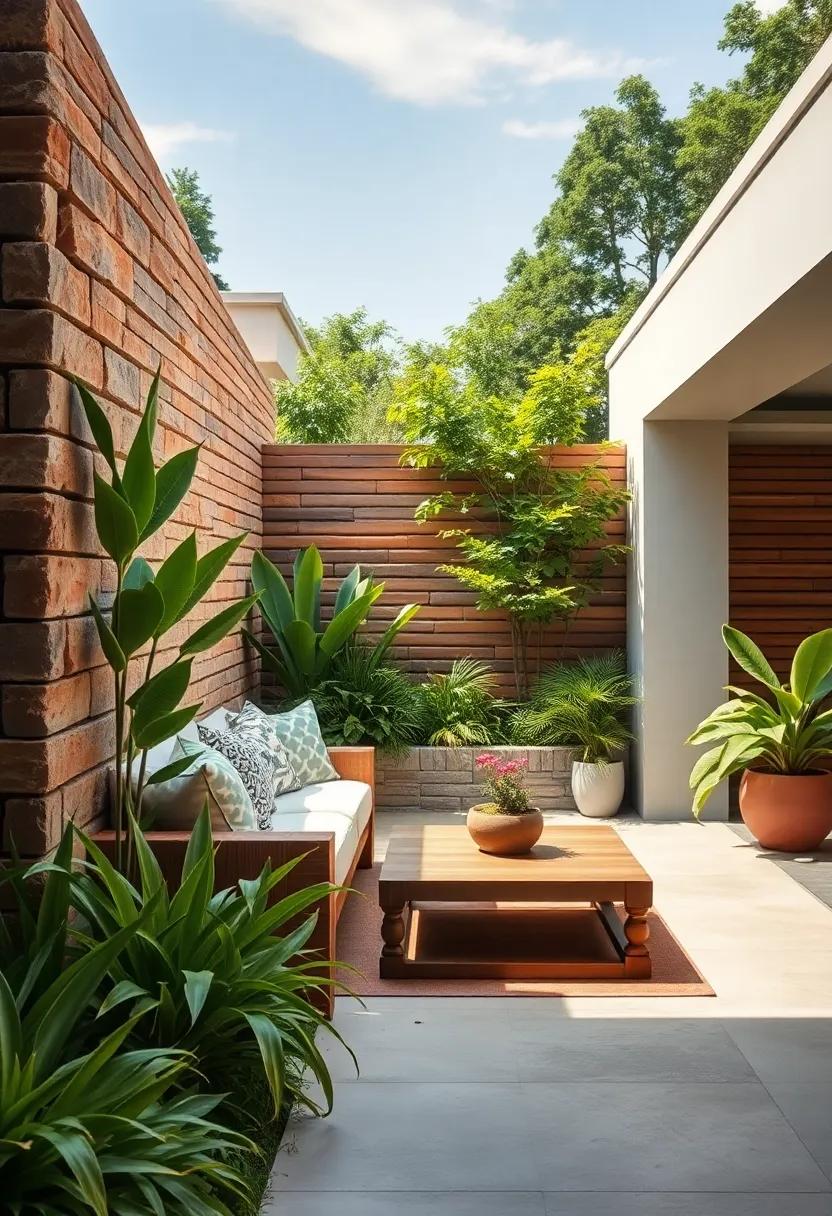
Choosing stone and brick for your garden borders not only enhances the aesthetic appeal of your outdoor space but also contributes substantially to sustainability efforts.These natural materials are durable and long-lasting, which means they won’t require frequent replacement like traditional wooden fences. By investing in stone and brick, you minimize your environmental footprint as they require less resource consumption over time—an ideal choice for eco-conscious gardeners.
Moreover, stone and brick borders can be a haven for biodiversity. They provide habitats for beneficial insects and small wildlife,fostering a balanced ecosystem right in your backyard.Their thermal mass can definately help regulate soil temperature, promoting healthier plant growth while also reducing the need for supplemental watering.key advantages include:
- Low maintenance: No painting or sealing required.
- Natural aesthetics: Blend seamlessly with the landscape.
- thermal regulation: Helps maintain soil temperature.
- Water retention: Limits erosion and maintains moisture.
Creating Privacy with vertical Gardens: A Natural Perspective on Fencing
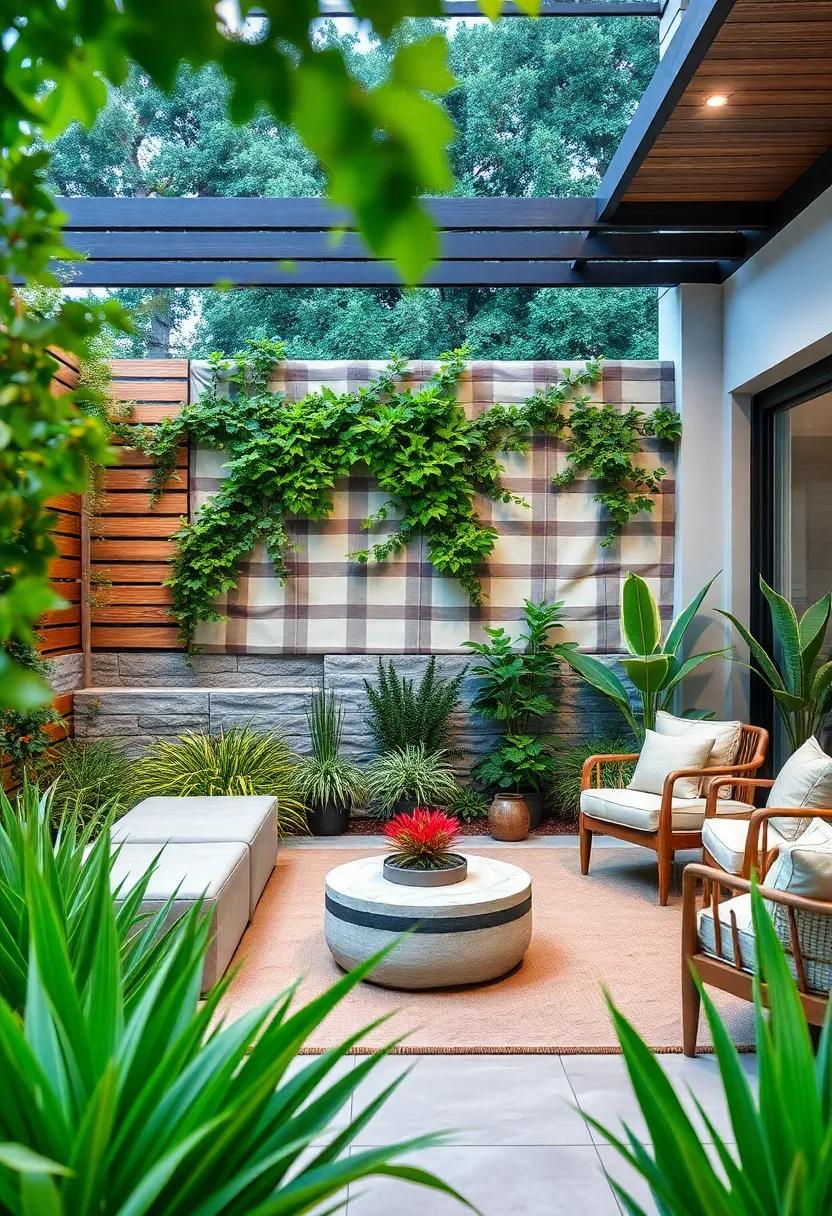
Vertical gardens are rapidly becoming a preferred choice for those seeking privacy without compromising on aesthetics. These lush green walls not only create a natural barrier but also infuse life into urban spaces. By utilizing a variety of climbing plants, herbs, and even small shrubs, homeowners can design an eye-catching living fence that allows for personal space while improving air quality and supporting biodiversity. The benefits of vertical gardens as a privacy solution include:
- Enhanced Visual Appeal: Transforming plain walls into vibrant green canvases.
- Sound Insulation: Acting as a natural sound barrier in noisy environments.
- Environmental Impact: Contributing to carbon sequestration and supporting urban wildlife.
Moreover, vertical gardens can be especially valuable in small gardens or balconies where traditional fencing may consume valuable ground space. With innovative designs and modular planting systems,creating a privacy wall today can be achieved more sustainably than ever.to inspire your own garden fence project, consider the following tips for successful vertical garden implementation:
| Tip | Description |
|---|---|
| Plant Selection | Choose local species to promote biodiversity and sustainability. |
| Maintenance | Plan for easy access to ensure regular upkeep and hydration. |
| Irrigation System | Set up a drip irrigation system to conserve water and simplify care. |
Leveraging Native Plants in Fencing Designs for Optimal Eco-Friendliness
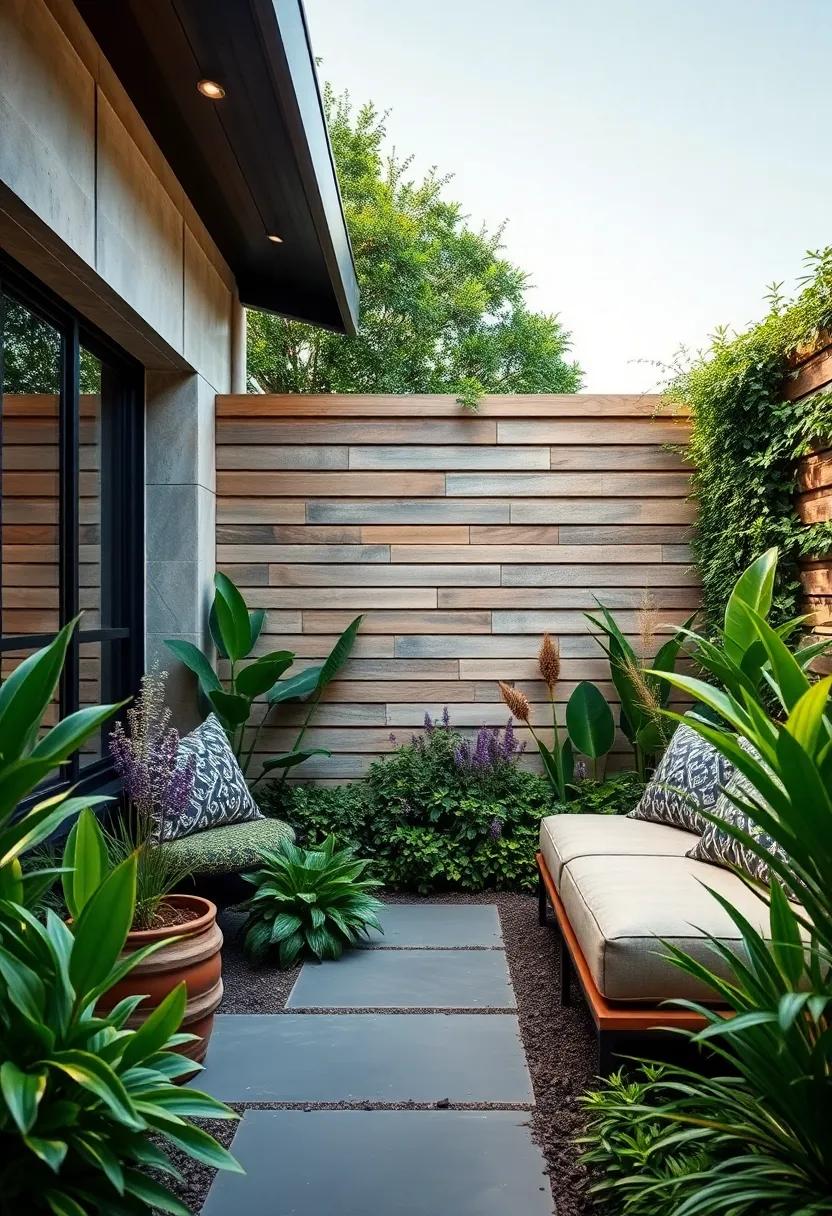
Incorporating native plants into garden fencing designs not only enhances the aesthetic appeal but also significantly contributes to environmental sustainability. By choosing local flora, homeowners can create living fences that offer a variety of benefits, including habitat creation for local wildlife, improved soil stability, and natural pest control. These plants are typically adapted to the local climate and soil conditions, reducing the need for extra water and fertilizers that can harm the ecosystem. Common choices include flowering shrubs, hardy vines, and low-maintenance grasses that native birds, bees, and butterflies favor, weaving a beautiful tapestry of color and life around your property.
The integration of these plants into fencing can be designed to meet specific objectives, not merely decorative but functional as well. For example, a table outlining some popular native plant options for fencing might look like this:
| Plant Type | Benefits | Ideal Conditions |
|---|---|---|
| Wild Rose | Attracts pollinators, thorny barrier | Full sun, well-drained soil |
| Clematis | Vibrant flowers, speedy growth | Partial shade, moist soil |
| Hazelnut Shrub | Nuts for wildlife, dense growth | Full sun to partial shade |
By deliberately choosing and placing these native plants within your fencing, you will not only create a visually stunning barrier but also contribute to the broader ecological balance. This sustainable approach to fencing allows for a symbiotic relationship between your garden space and the surrounding environment, showcasing your commitment to eco-friendliness while enhancing the beauty and functionality of your outdoor areas.
How coastal Communities are Leading the Way in eco-Fenced Gardens
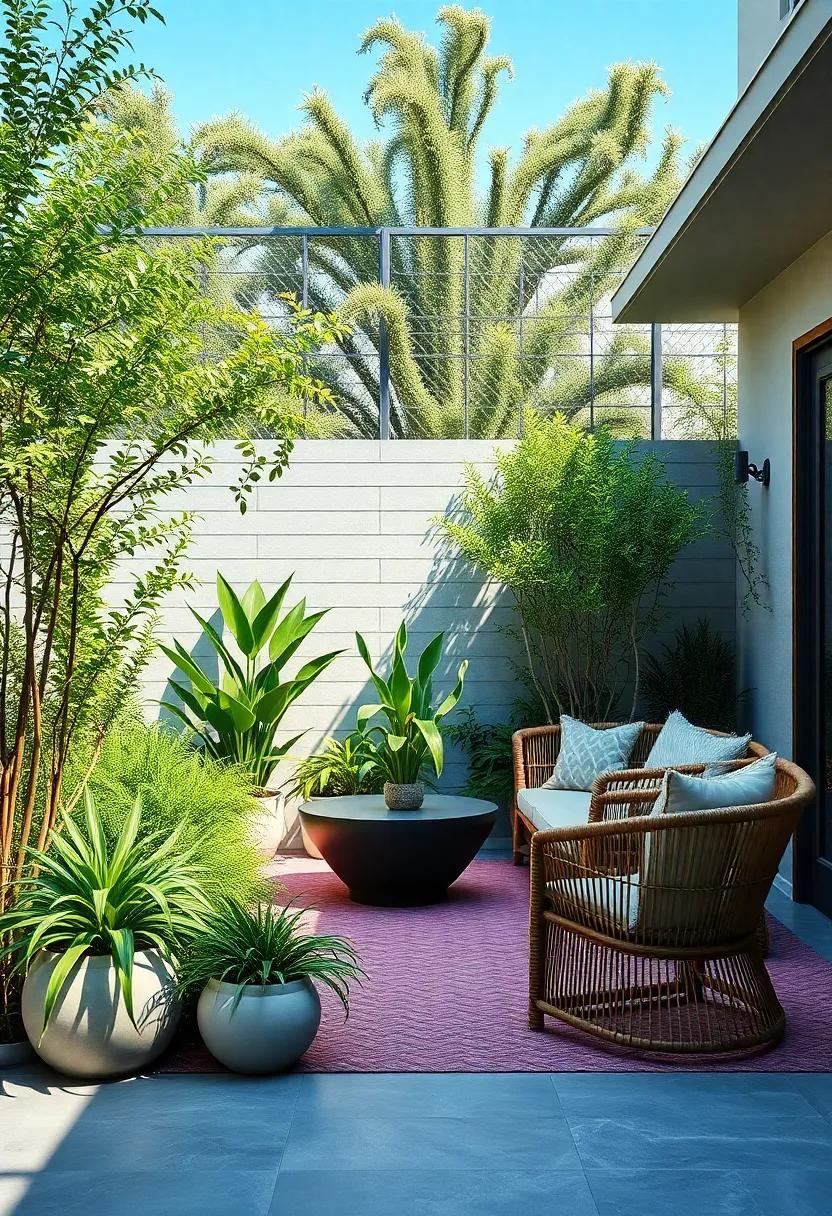
Coastal communities are at the forefront of adopting eco-friendly garden fencing, often spearheading innovative designs that not only enhance aesthetics but also promote environmental sustainability. Local artisans and environmental groups are collaborating to create fencing solutions made from sustainable materials like reclaimed wood, bamboo, and recycled plastic. These materials are not only durable but also blend harmoniously with the natural surroundings, allowing for seamless integration of gardens and landscapes. By incorporating plants into their fencing—such as climbing vines and flowering shrubs—these communities are turning boundaries into vibrant ecosystems that attract local wildlife, reduce noise pollution, and improve air quality.
Additionally, the adoption of eco-fenced gardens comes with a wealth of educational opportunities for residents and visitors alike. Coastal towns are hosting workshops and community events that teach sustainable gardening practices, including the importance of biodiversity and native plant preservation.These initiatives create a sense of community while fostering a deeper connection to the environment. Here are some core benefits highlighted at these events:
| Benefit | Description |
|---|---|
| Wildlife Habitat | Fences designed for fostering plant growth support bird and insect populations. |
| Soil Health | Natural materials improve soil quality through responsible material usage. |
| Community Engagement | Workshops encourage community bonding and shared ecological responsibility. |
Artisanal Metalwork: Merging Durability with Eco-Friendly Designs
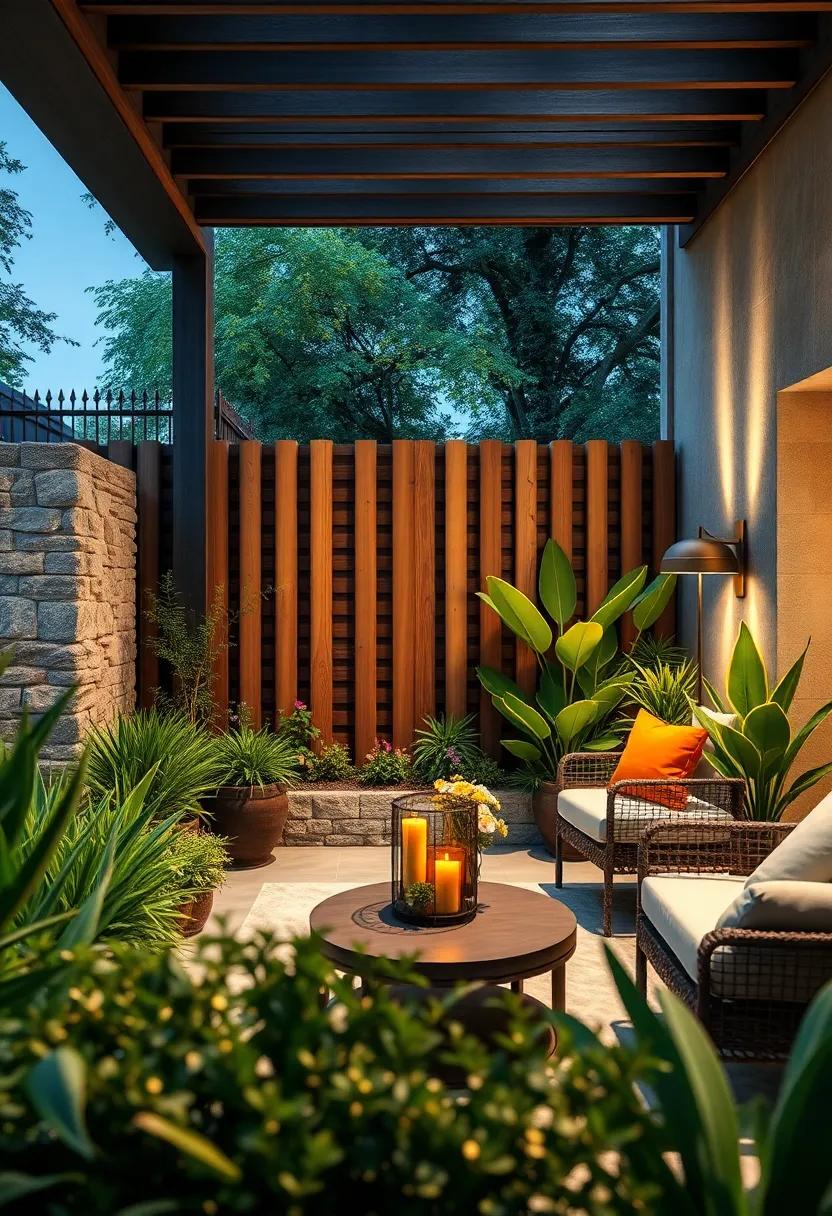
Incorporating Artistic Elements into Garden Fences for a Unique Expression

Garden fences traditionally serve the purpose of defining boundaries and providing privacy, but they can also become vibrant canvases for artistic expression.by integrating artistic elements, homeowners can transform a standard fence into an eye-catching feature that complements their landscape. Consider incorporating colorful murals, intricate carvings, or mosaic tiles to add a distinctive flair.These artistic touches not only enhance visual appeal but also reflect personal style, turning a simple barrier into a stunning focal point that invites curiosity.
Furthermore, the use of natural materials can amplify this creative endeavor, blending artistry with eco-friendliness. Options such as reclaimed wood, bamboo, or metal artworks can be stylish yet sustainable choices. To maximize the impact of these artistic designs,consider elements like:
- Living Walls: Incorporating plants into the fence itself creates harmony with the surrounding nature.
- Lighting features: Adding solar lights or artistic lanterns can enhance the beauty of artistic elements during the evening.
- Interactive Art: Create spaces for children or pets, such as chalkboard sections or climbing plants, making the fence both functional and fun.
The fusion of functionality and creativity in garden fences not only elevates outdoor aesthetics but also promotes a sense of community, as others might potentially be inspired by the unique expressions visible from the street.
Colorful Alternatives: The Rise of Eco-Friendly Paints in Fencing
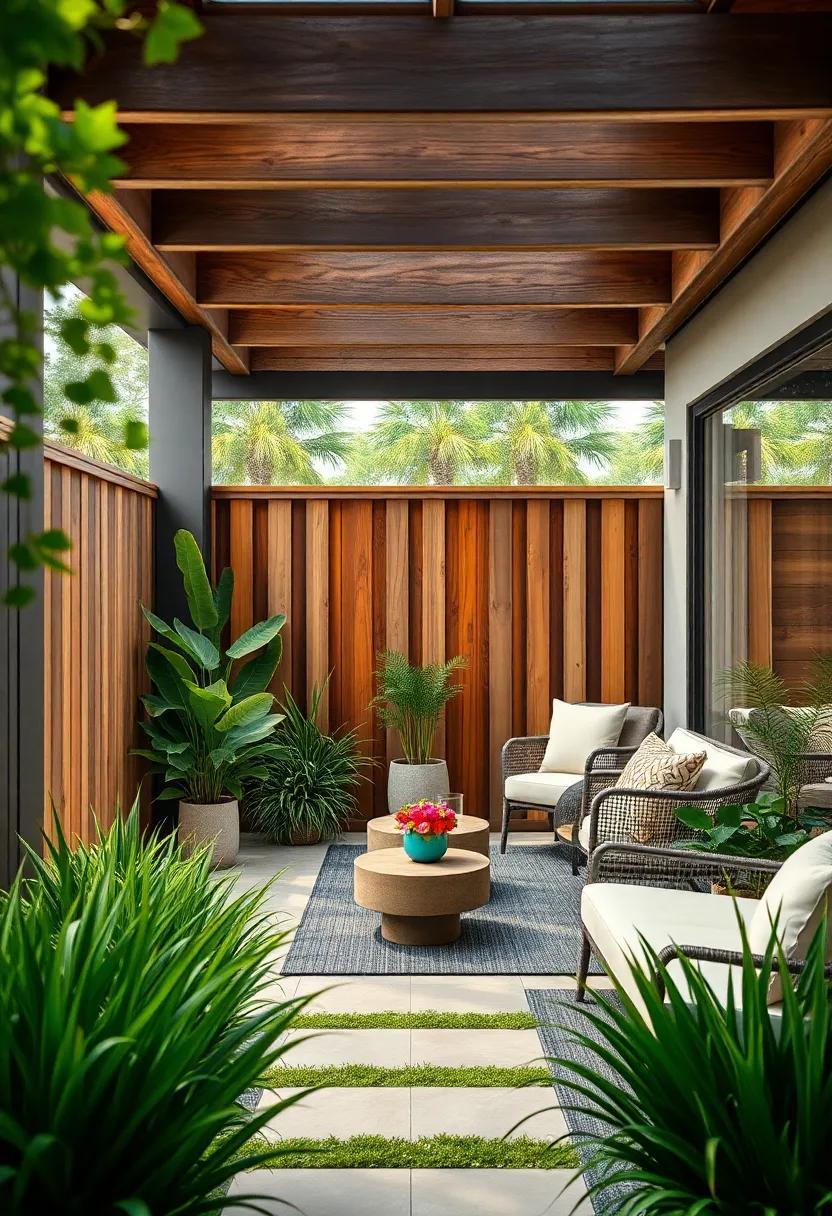
In the quest for a more sustainable lifestyle, eco-friendly paints are gaining traction in the realm of garden fencing. Unlike traditional paints, which often contain harmful chemicals, eco-paints are made from natural ingredients that are biodegradable and non-toxic. This shift not only reflects a growing awareness of environmental impacts but also opens up a world of vibrant color possibilities. Homeowners can now choose from a wide range of hues derived from plant extracts, clays, and mineral pigments, ensuring that their fences not only blend harmoniously with nature but also make a stunning visual statement.
When opting for sustainable painting options, it’s essential to consider various factors that underscore their eco-friendliness. Here’s a quick breakdown:
| Eco-Friendly Paints | Benefits |
|---|---|
| Low VOC | No harmful emissions, safer for indoor and outdoor use. |
| Biodegradable | Breaks down naturally over time, reducing landfill waste. |
| Durable finishes | Long-lasting protection against the elements, minimizing repainting needs. |
| Natural aesthetics | Rich colors that blend beautifully with the landscape. |
Adopting these colorful alternatives not only enhances the beauty of your garden but also promotes a more sustainable way of living.By making the switch to eco-friendly paints, fencing can transform from a simple boundary to a canvas of creativity, celebrating the environment and the artistry of nature.
Harnessing Natural Textures for a Rustic Garden Fence Appeal
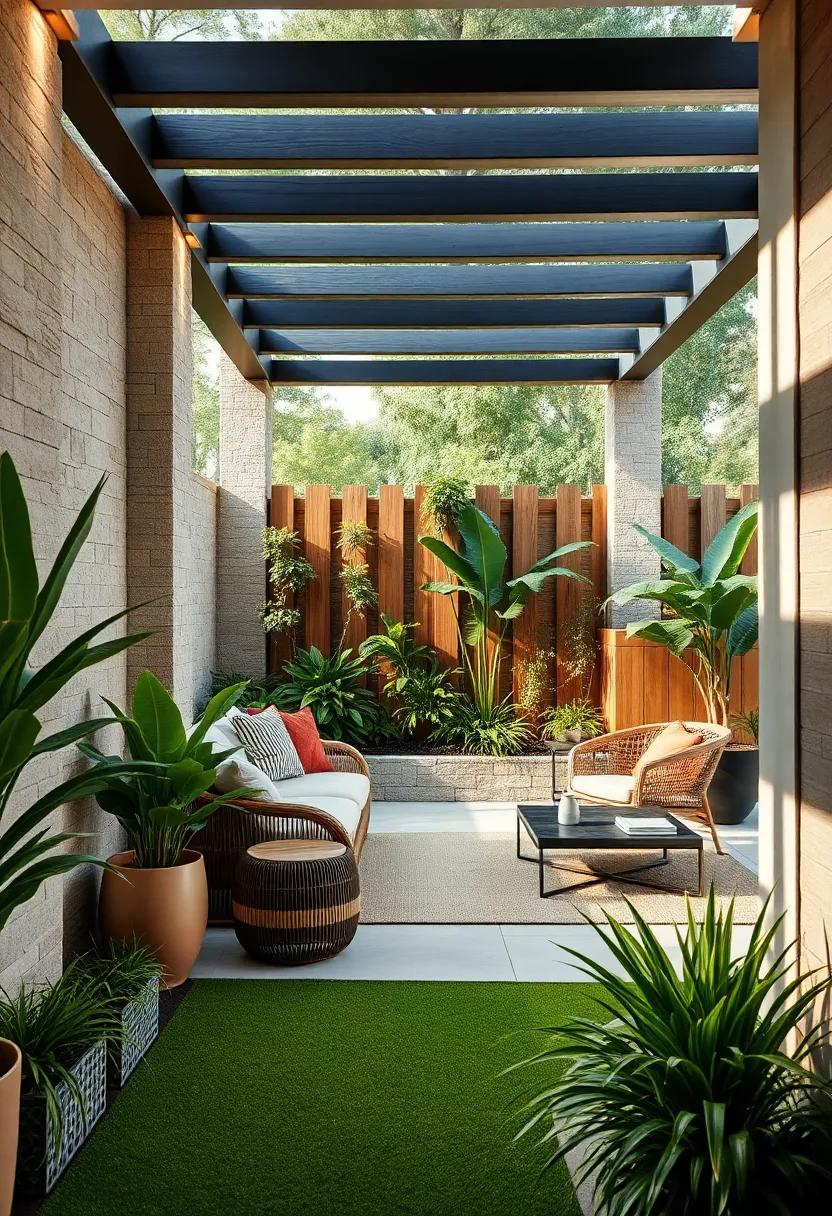
Integrating natural textures into your garden fence can significantly enhance its rustic appeal, harmonizing beautifully with the surrounding environment. Using materials like untreated wood, bamboo, or reclaimed timber not only boasts aesthetic value but also supports sustainability efforts. The rough grains and organic imperfections of these materials add a unique character, leading to a more authentic feel. Consider the following elements when choosing the right texture for your fence:
- Weathered Wood: Complements natural landscapes and blends seamlessly with plants.
- bamboo Fencing: Lightweight, strong, and promotes a tropical vibe.
- Reclaimed Barn wood: Offers a storied past and sustainable source.
To enhance the rustic charm further, you might explore creative ways to incorporate different textures. As an example,pairing a rough-hewn wooden fence with soft climbing plants creates a visually appealing contrast,while metal accents like rustic hinges or latches can introduce an industrial touch without overwhelming the overall organic aesthetic. Below is a simple overview of texture combinations:
| Material Type | Complementary Plant |
|---|---|
| Weathered Wood | Climbing Roses |
| Bamboo | Ornamental Grasses |
| Reclaimed Wood | Vining Beans |
Repurposing Old Fences: A Creative Approach to Sustainable gardening
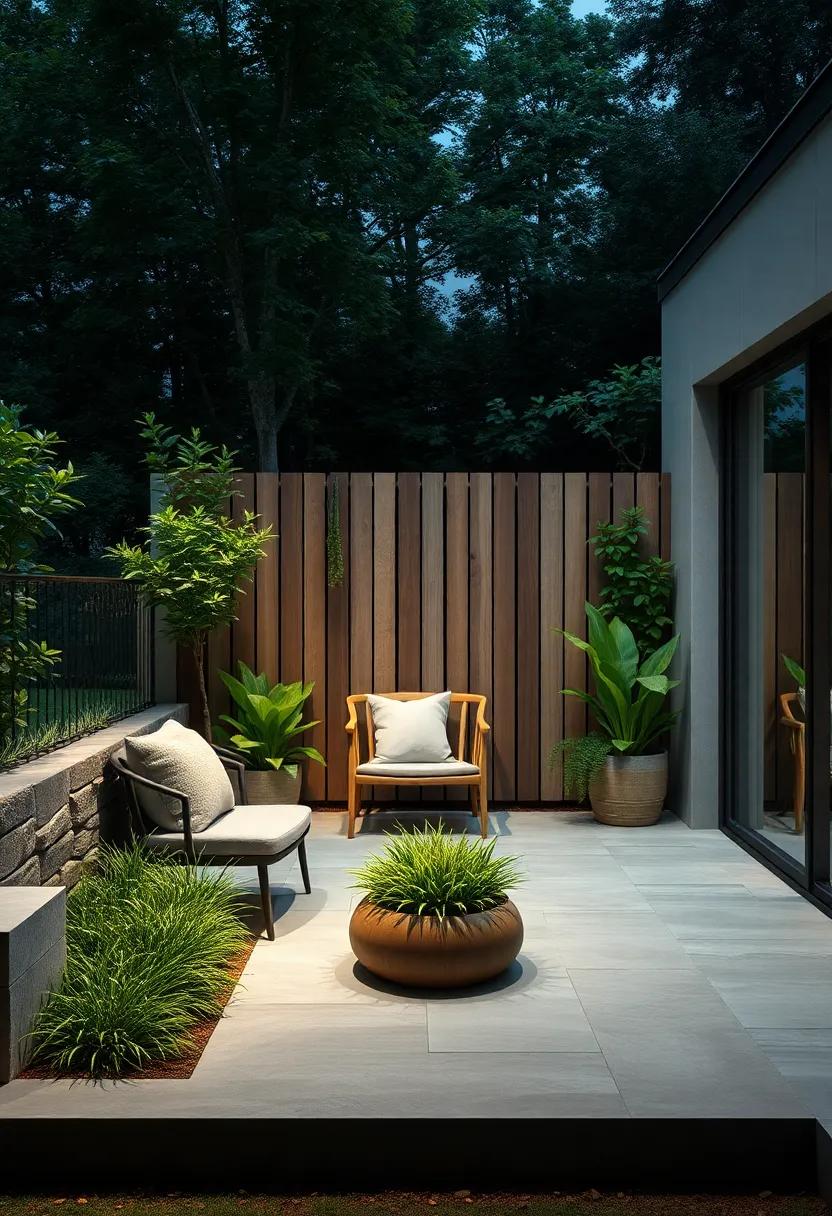
Repurposing old fences is not only an artistic endeavor but also a fantastic way to promote sustainability in your garden. By giving new life to discarded materials, you can create unique structures that serve functional purposes while adding character to your outdoor space. Consider transforming worn wooden panels into:
- Vertical Garden Frames: Attach planters vertically to create a stunning living wall that saves ground space.
- Garden Trellises: Use sections of fence to support climbing plants, enhancing both beauty and biodiversity.
- Folk Art Displays: Paint and decorate old boards, using them as backdrops for garden art or tools.
Additionally, combining practical needs with creativity can lead to remarkable outcomes when you integrate old fencing into new designs. Some ideas to consider include:
| Repurposing Idea | Benefits |
|---|---|
| Border Edging | Defines space while preventing grass encroachment |
| Compost Bin | Durable and eco-friendly waste management solution |
| Garden Seating | Creates rustic benches for relaxation without additional costs |
The Role of Garden Fences in Promoting Biodiversity and Wildlife Habitats
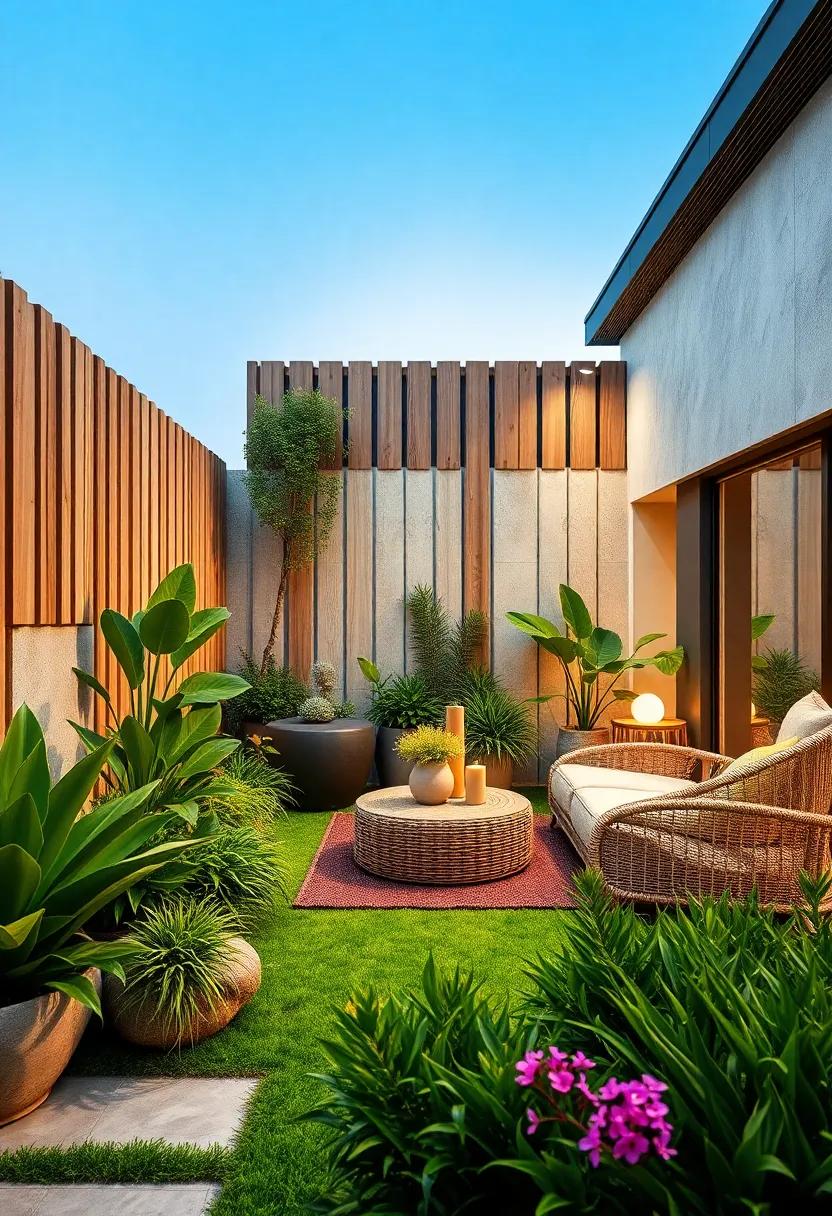
Garden fences play a pivotal role in fostering biodiversity and creating essential habitats for various wildlife species. By selecting eco-friendly materials and designs, gardeners can not only enhance the visual appeal of their outdoor spaces but also promote a healthier ecosystem. Natural wood, bamboo, and recyclable metals are popular choices that provide shelter for small creatures, while strategically placed fences can prevent the unintended escape of beneficial insects like pollinators. Incorporating features such as wildlife corridors and hedge-rows can further enhance these benefits, allowing animals to traverse freely while decreasing the impact of fragmentation in their natural habitats.
Moreover,garden fences can serve as a canvas for local flora,encouraging the growth of native plants that attract a myriad of wildlife. Adding climbing plants or vertical gardens onto fences not only enriches the ecosystem but also creates vertical habitats. Some effective choices include:
- Clematis: A flowering vine that attracts butterflies.
- Honeysuckle: Offers nectar to birds and bees.
- Blackberries: Provides food for various small animals.
This eco-conscious conversion of garden fencing supports local biodiversity, transforming ordinary yards into vibrant, inviting spaces for wildlife, which ultimately enriches the overall gardening experience.
Sustainable Garden Fencing: Elements of Design and Beauty in Harmony
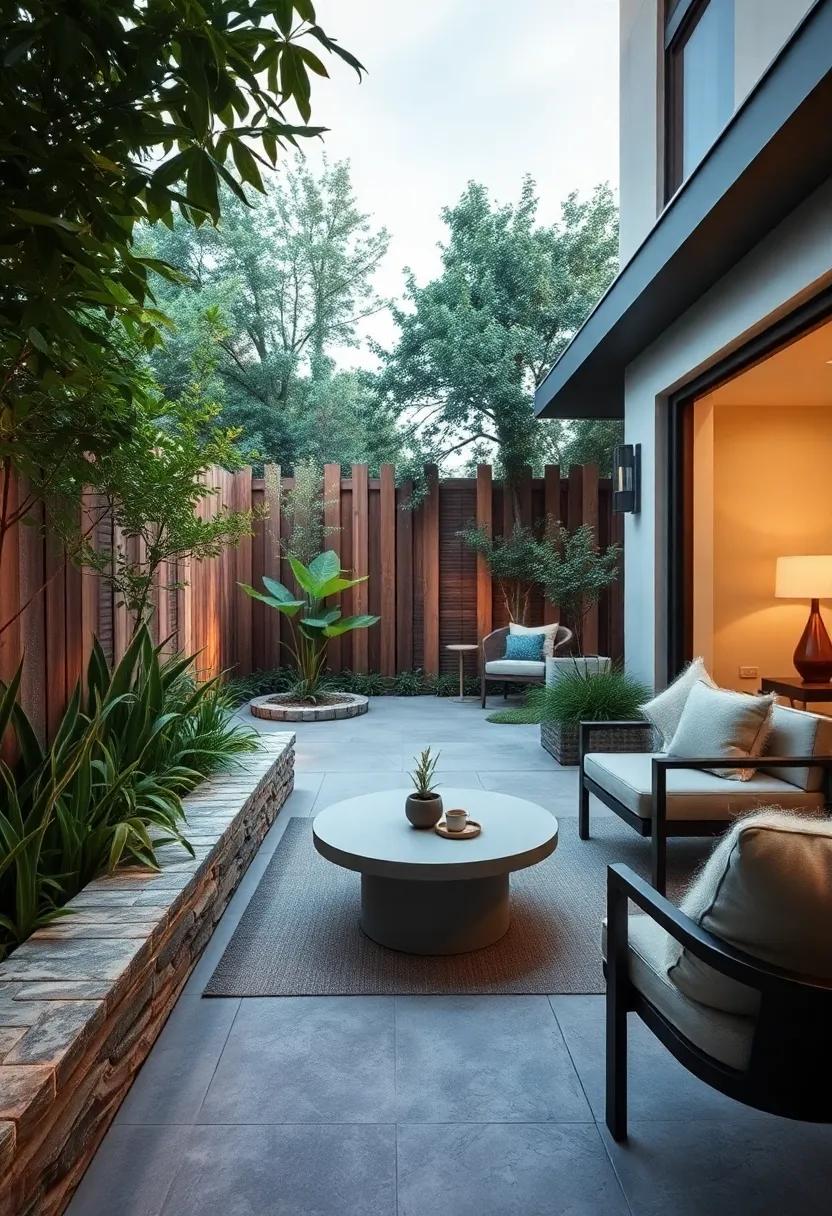
In the quest for a more sustainable lifestyle, garden fencing is experiencing a transformative shift. The modern gardener seeks to create a harmonious blend of function and elegance, ensuring that the boundaries of their green haven do not detract from its natural beauty. Materials play a pivotal role in this evolution, with options such as reclaimed wood, bamboo, and living fences taking center stage. These organic choices not only reduce waste but also encourage biodiversity, providing habitats for local wildlife while enhancing the aesthetic appeal of the garden. Additionally, incorporating natural paints or stains can further align your fence with eco-friendly principles, allowing you to protect the wood while embracing a palette inspired by nature.
Design elements are just as crucial as materials in achieving the desired balance between beauty and sustainability. Features such as green screens, which involve climbing plants or vines, not only soften the visual impact of a fence but also improve air quality.Moreover, consider implementing a range of textures and heights within the fencing structure to create visual interest and a sense of depth. Alternatives like living walls and vertical gardens can double as fencing and planting space, maximizing utility in a compact area. The emphasis on sustainable design is not merely about being eco-conscious; it’s about cultivating an environment where both art and nature flourish seamlessly together.
The Allure of Herbaceous borders: Creating Natural Garden Boundaries
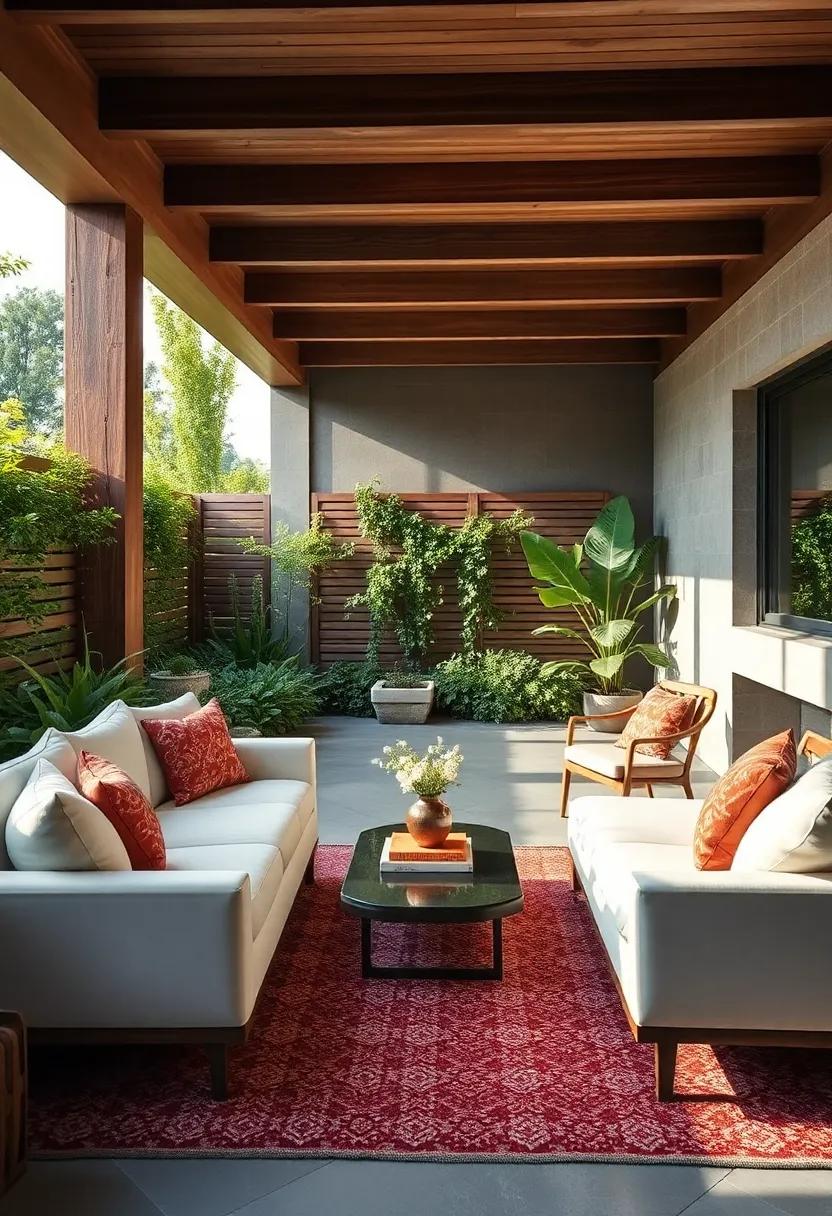
In the quest for eco-friendly garden solutions, herbaceous borders have emerged as perfect natural boundaries that seamlessly blend aesthetics with functionality.These lush plantings not only delineate spaces but also foster biodiversity by providing habitats for pollinators and beneficial insects. By incorporating a diverse selection of perennial plants,gardeners can create vibrant borders that change throughout the seasons,ensuring a continually appealing backdrop. Key benefits of herbaceous borders include:
- Natural Beauty: The varying heights and colors of plants bring visual interest.
- Wildlife Habitat: Supports ecosystems by attracting bees, butterflies, and birds.
- Soil Health: Perennials enhance soil structure and prevent erosion.
- Low Maintenance: Once established,herbaceous plants require less care.
Designing an effective herbaceous border requires careful planning and an understanding of plant compatibility. It’s essential to select species that thrive in your local climate while considering factors such as flowering times, foliage texture, and overall height. Grouping plants with similar sunlight and water needs ensures a healthier, more resilient border. Consider creating a simple layout as follows:
| Plant Type | Height | Sunlight | Flowering Season |
|---|---|---|---|
| Lavender | 2-3 ft | Full Sun | Summer |
| Black-eyed Susan | 2-3 ft | Full Sun | Summer to fall |
| Hosta | 1-4 ft | Partial Shade | Summer |
| Astilbe | 1-3 ft | Partial shade | Summer |
Building Eco-Conscious Communities Through shared Garden Fencing Ideas
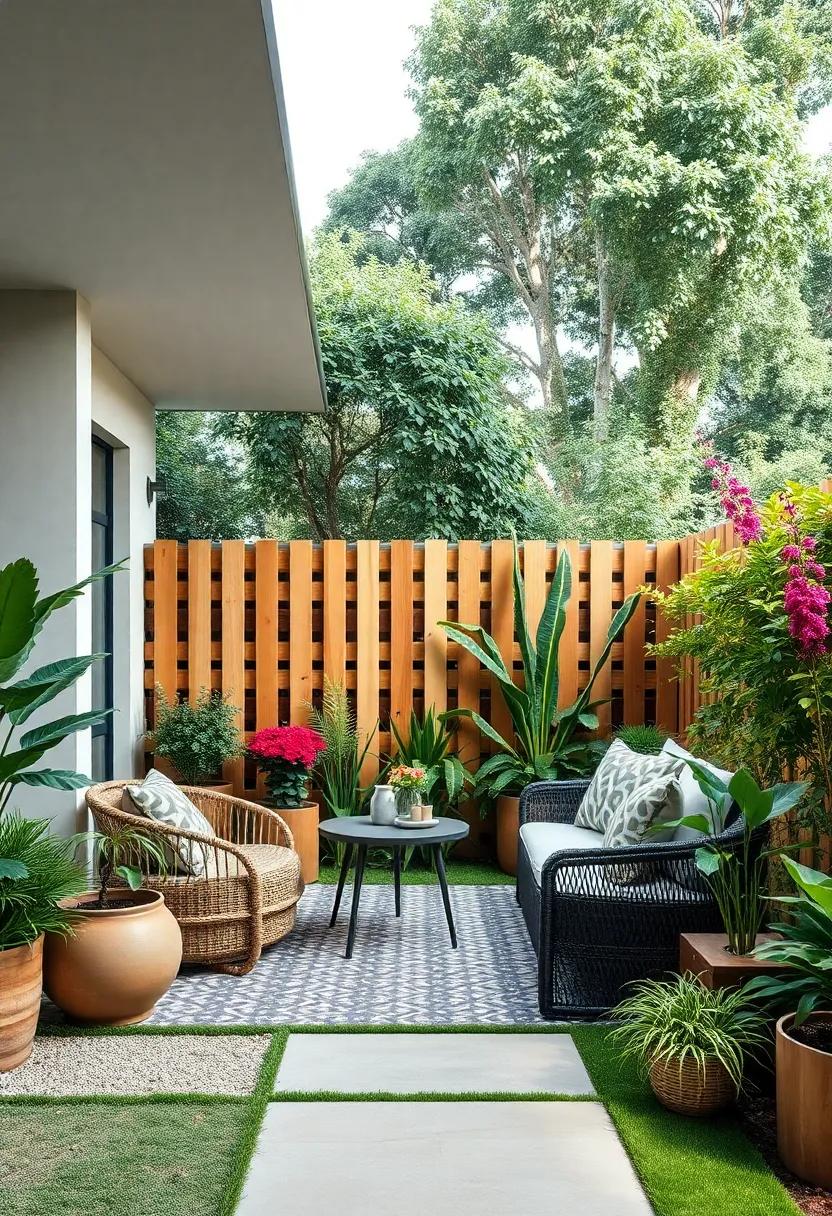
As communities shift towards greener practices, shared garden fencing ideas are leading the charge in creating eco-conscious environments. These fences not only delineate property lines but also serve as a canvas for innovation and sustainability.incorporating natural materials like bamboo, reclaimed wood, and living fences composed of native plants allows for boundaries that complement the local ecosystem while providing habitat for pollinators and wildlife. Communities can come together to design and implement fencing solutions that promote biodiversity and reduce carbon footprints, establishing a sense of ownership and collaboration among residents.
Building these shared fences can foster a spirit of community gardening, where neighbors pool resources and creativity. Consider organizing workshops to build fences from sustainable materials or even growing vertical gardens on shared structures. This not only adds aesthetic value but also encourages the growth of edible plants, promoting food sustainability.To inspire your community,here’s a simple comparison of popular eco-friendly fencing options:
| Fencing Type | Benefits | Considerations |
|---|---|---|
| Bamboo | Renewable,strong,aesthetic | May require treatment against pests |
| Reclaimed Wood | Environmentally friendly,unique look | May have limited durability |
| Living Fences | Habitat for wildlife,beautiful greenery | Requires maintenance and planning |
Trends in fence Height Variations: finding Balance Between Style and Nature
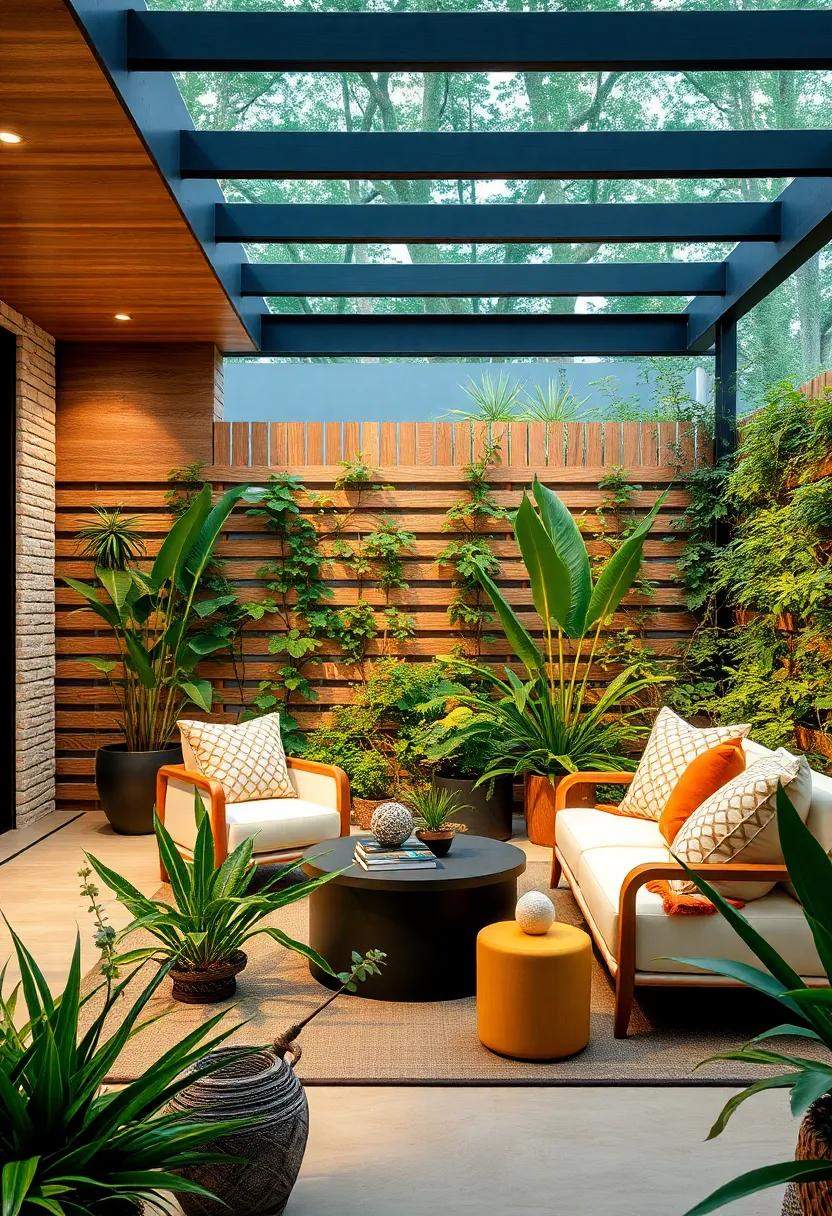
In recent years, there has been a noticeable shift in the design of garden fences, with homeowners striving to create a harmonious balance between aesthetics and their surroundings. Many are now opting for lower fence heights, which promotes an inviting ambiance while allowing for an uninterrupted view of the landscape. These more modest structures not only provide a sense of enclosure but also serve to highlight the natural beauty of the garden. To further enhance this connection with nature, materials like bamboo, reclaimed wood, and living plant walls have surged in popularity, providing eco-friendly options that seamlessly blend into the environment.
An important aspect to consider is the perception of privacy and security, which can often dictate fence height. However, innovative designs are emerging that prioritize style without sacrificing function. Homeowners are now exploring options such as transparent or semi-opaque fences,which offer a unique visual connection to the garden while still acting as a boundary. Additionally, incorporating natural elements in design—like climbing plants or trellises—allows for transformative growth; these fences evolve and flourish, creating a dynamic interaction between structure and nature, ensuring that aesthetics remain a priority without compromising on eco-conscious principles.
Seasonal Changes and Their Influence on Eco-Friendly Garden Fence Aesthetics
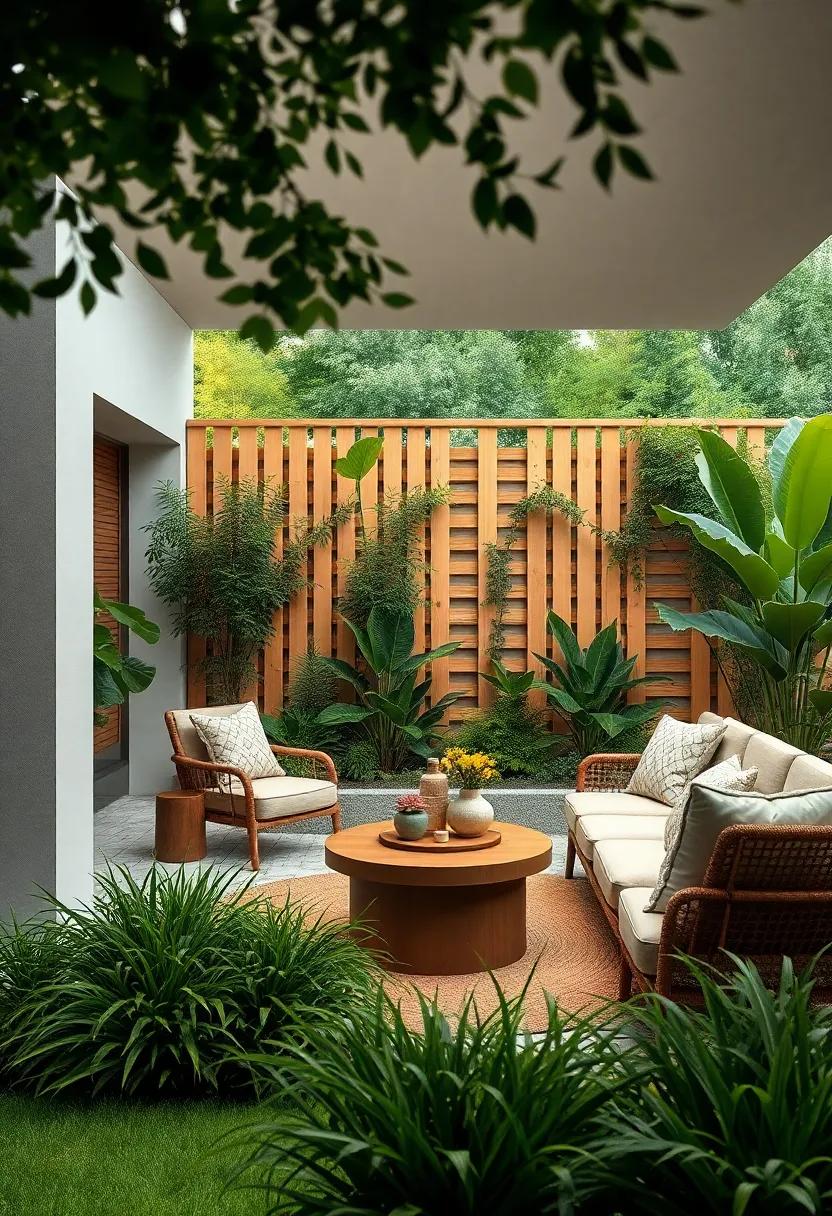
As the seasons turn, so too do the moods and colors of nature, providing an ever-changing backdrop for eco-friendly garden fences. Each season brings unique elements that can influence the choice of fencing materials and designs intended to enhance aesthetic appeal while promoting environmental sustainability. in spring, for instance, vibrant blooms and new growth encourage the use of natural wood or woven willow, materials that blend seamlessly with the lush landscape. These organic options not only contribute to an inviting atmosphere but also resonate with bees and other pollinators, reinforcing a sense of harmony within the garden ecosystem.
In contrast, autumn invites a palette of warm tones and textures that can guide the selection of recycled metal or bamboo panels.The rustling leaves and fading light could inspire garden owners to incorporate fences that are not only attractive but also resilient against the elements. Consider the following factors on how seasonal changes can shape eco-friendly garden fence aesthetics:
- color Schemes: Selecting hues that blend with seasonal foliage.
- Material Durability: Choosing materials suited for specific weather conditions.
- Wildlife Considerations: Implementing designs that support local fauna during each season.
By thoughtfully considering the seasons, garden enthusiasts can create a cohesive outdoor space that is not only visually appealing but also environmentally considerate. This seasonal mindfulness in choosing materials and designs sends a strong message about sustainability, ensuring that the garden remains a sanctuary for both plants and wildlife throughout the year.
Celebrating Local Craftsmanship in Eco-Friendly Fence Building Practices

The resurgence of eco-friendly gardening practices has allowed local artisans to showcase their skills in innovative and sustainable ways. Utilizing reclaimed and naturally sourced materials, these craftsmen are reinterpreting traditional designs to harmonize beautifully with their surroundings. By opting for eco-conscious materials such as bamboo, recycled wood, and even gabion fencing filled with local stones, they not only enhance the aesthetic appeal of outdoor spaces but also contribute significantly to environmental preservation. This approach doesn’t just beautify the landscape; it also promotes a sense of community by supporting local businesses and fostering a connection between the consumer and the craftsman.
Moreover, the commitment to sustainable practices extends beyond just materials. Local craftsmen are embracing natural finishes and biodegradable treatments that guarantee durability without harming the ecosystem. Their artisan techniques often incorporate elements that enhance biodiversity, such as gaps for wildlife passage or planting options directly within fences, providing a habitat for birds and pollinators. As homeowners increasingly prioritize sustainability in their landscaping choices, these creative endeavors stand to create a lasting impact, ensuring that the natural beauty of their gardens is respected and preserved for future generations.
Transformative Garden Fencing: How Colors Influence Outdoor Environments
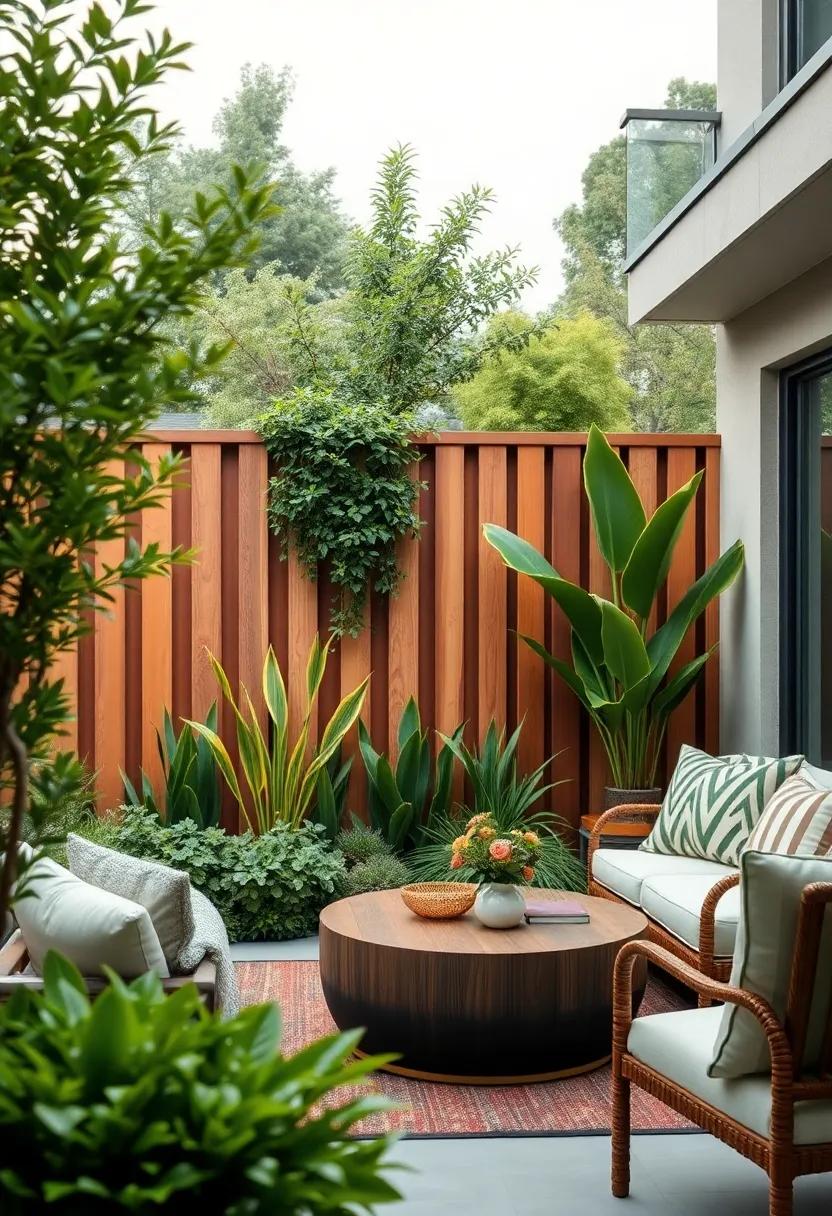
Color in garden fencing is not merely an aesthetic choice; it serves as a medium that enhances the overall atmosphere of an outdoor space. Soft hues like sage green and sky blue can evoke a sense of tranquility, blending the fence seamlessly with natural surroundings. In contrast, vibrant colors such as deep red or sunny yellow can add a lively touch, breaking the monotony and injecting energy into the garden.This interplay of colors can even affect the perceived size of the garden,making smaller spaces feel more expansive with lighter shades or cozy with warmer tones.
beyond aesthetics, the psychological impact of color in outdoor environments is profound. Studies have shown that certain colors can influence mood and even stress levels. Such as, calming shades like lavender and pastel pinks encourage relaxation, while brighter tones like orange and teal can stimulate creativity and joy. Choosing the right color for your garden fence can create an inviting environment, promoting relaxation and social interaction.To illustrate the impact of various fence colors on garden ambiance, consider the following table:
| Color | Effect | Best for |
|---|---|---|
| sage Green | Tranquility | Relaxation Areas |
| Vibrant Red | Energy Boost | Play Areas |
| Sky Blue | Peacefulness | Seating Areas |
| Sunshine Yellow | Joyfulness | Gardens for Gathering |
Fencing That Supports Soil health: An Eco-Friendly Approach to Installation
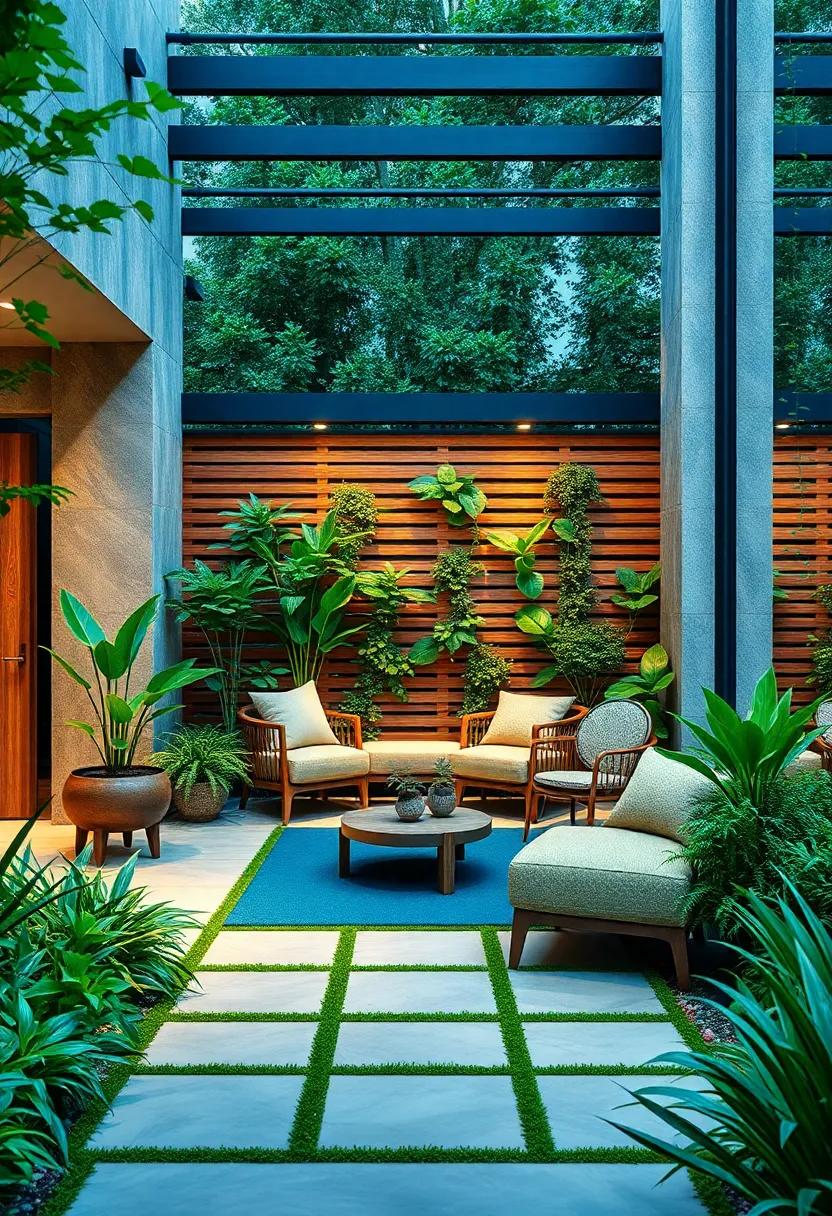
The evolution of fencing technology has lead to innovative solutions that prioritize environmental sustainability, making soil health a key consideration during installation. Eco-friendly fencing options are now designed to harmonize with the environment rather than disrupt it. By utilizing materials like reclaimed wood, natural stone, and bamboo, gardeners can create boundaries that enhance the surrounding ecosystem. Additionally, these materials are often sourced locally, which not only reduces carbon footprints but also supports local economies. The fencing strategies employed can also include designs that leave room for native flora and fauna, fostering biodiversity in garden spaces.
Moreover, eco-conscious installations incorporate practices that directly benefit soil health.By choosing fencing structures that allow for natural ground moisture retention and aeration, gardeners can promote healthier soil microbiomes. Features such as living fences—which include hedges or shrubs that serve as barriers—create a symbiotic relationship between the fence and the soil.These installations can lead to improved nutrient cycling and provide habitats for beneficial insects and pollinators. As more gardeners embrace these sustainable practices,they contribute to a broader movement that champions ecological balance in residential and urban landscapes.
Navigating the Growing Interest in Eco-Conscious Urban Gardening Fences
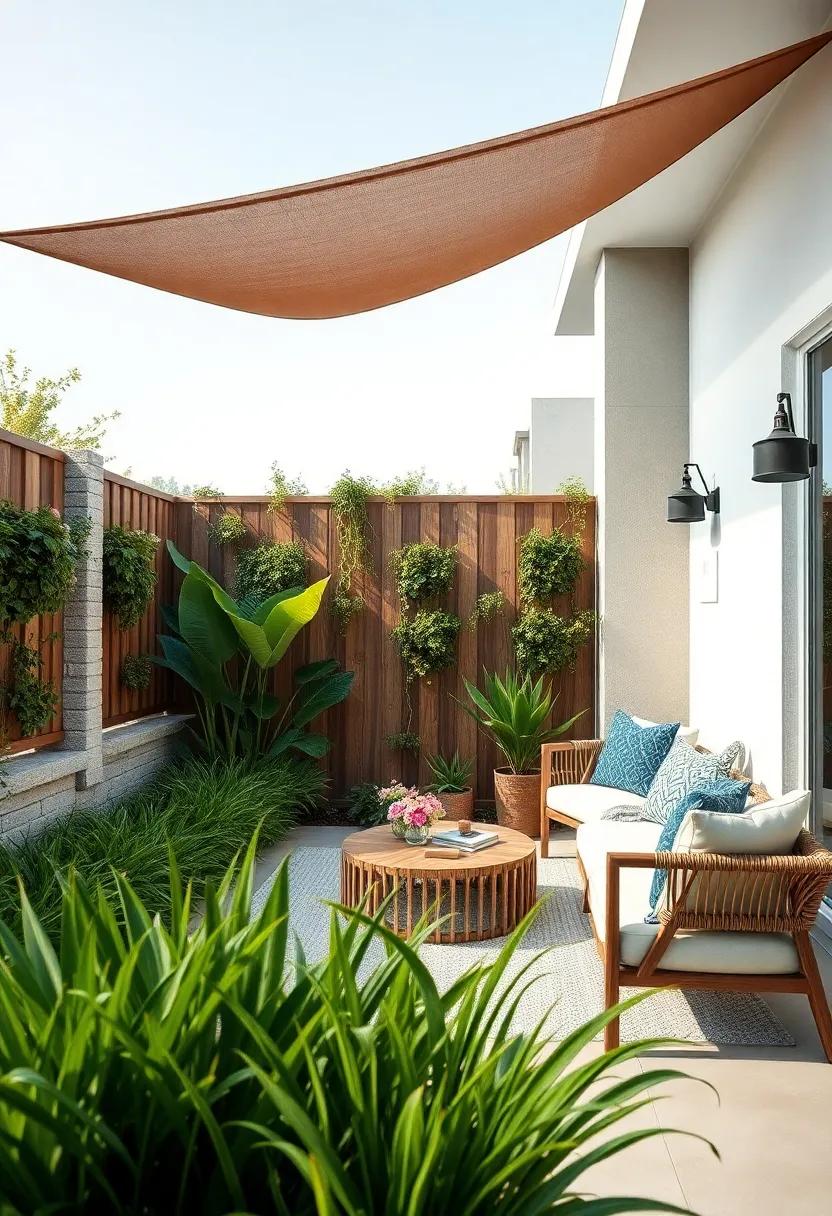
Urban gardening is blossoming into a major movement, and the fence surrounding these green spaces is rapidly becoming an essential element in eco-conscious design. Gardeners are now prioritizing materials that are not only sustainable but also contribute positively to the ecosystem. Traditional wooden fences are frequently enough treated with chemicals that can leach into the soil; rather, gardeners are opting for bamboo, reclaimed wood, or even living fences made from native plants. These choices not only provide privacy and structure but also enhance biodiversity and promote a healthier environment.
Moreover, the aesthetic appeal of an eco-friendly fence plays a significant role in attracting urban gardeners. A variety of designs can seamlessly integrate these fences into any garden display. Some popular trends include:
- Vertical gardens: Utilizing vertical space with herbs or flowering plants that climb the fence.
- Artistic installations: Fences adorned with mosaic tiles or recycled materials that add character.
- Wildlife-friendly designs: Incorporating gaps and specific plantings that encourage pollinator visits.
This shift towards eco-friendly fencing solutions not only fosters a sense of community engagement but also resonates with the growing demand for sustainable living practices in urban areas.
Crafting Your Outdoor Sanctuary: The Emotional Benefits of Natural Fencing
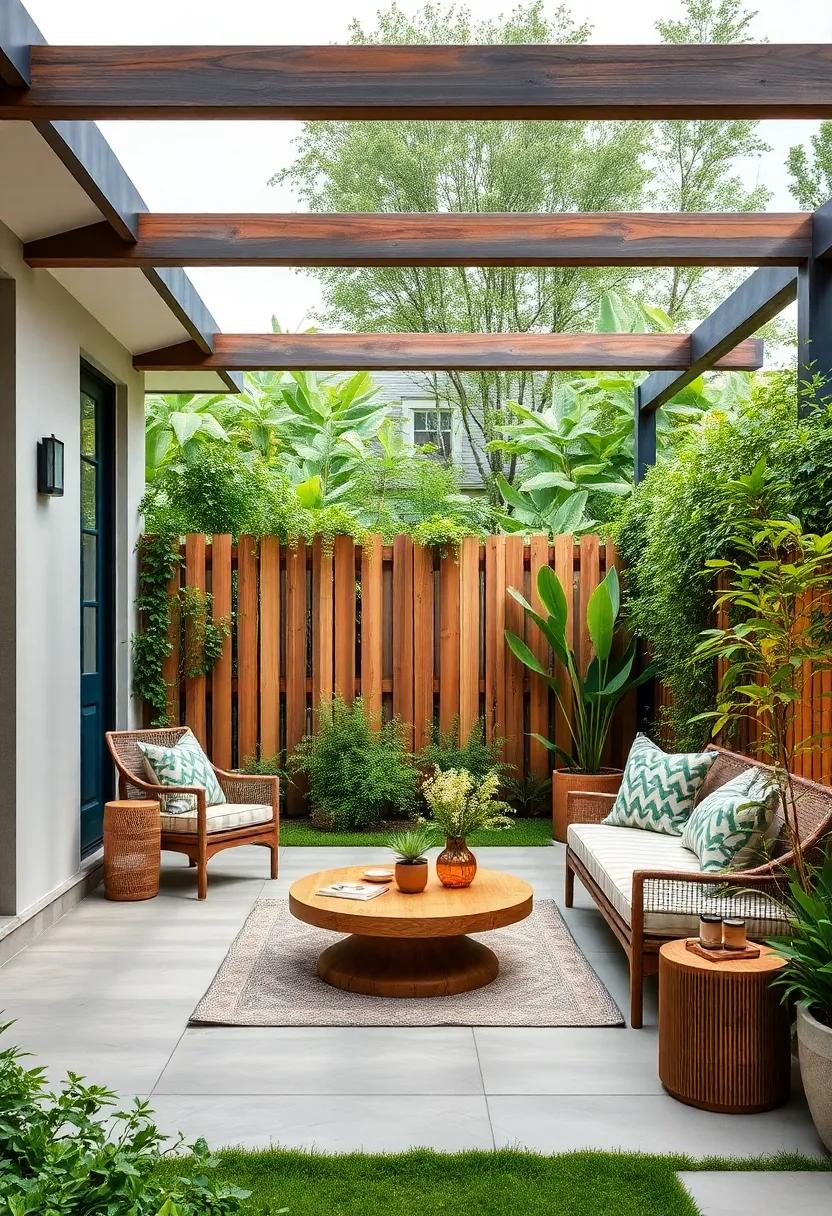
Creating an outdoor sanctuary is not merely about aesthetics; it significantly impacts one’s emotional well-being. Natural fencing,such as living hedges,bamboo,or wooden panels,fosters a sense of privacy and serenity,allowing individuals to retreat from the chaos of daily life. The organic textures and colors present in natural materials harmonize beautifully with surrounding flora, creating an inviting atmosphere that promotes relaxation and mindfulness. This connection to nature can reduce stress levels,enhance mood,and nurture a sense of belonging within one’s environment.
Moreover, opting for eco-friendly fencing options can elevate your emotional experience by fostering a deeper relationship with the ecosystem. These materials frequently enough promote biodiversity,attract wildlife,and contribute positively to the environment. In addition, they can encourage sustainable practices within your home and community. Some emotional benefits include:
- Enhanced tranquility: The gentle rustle of natural barriers can soothe the mind.
- Sense of accomplishment: Contributing to the environment through sustainable choices.
- Connection with wildlife: Witnessing nature’s beauty firsthand adds joy to your day.
The Future of fencing: Integrating Technology with Green Practices in Gardening
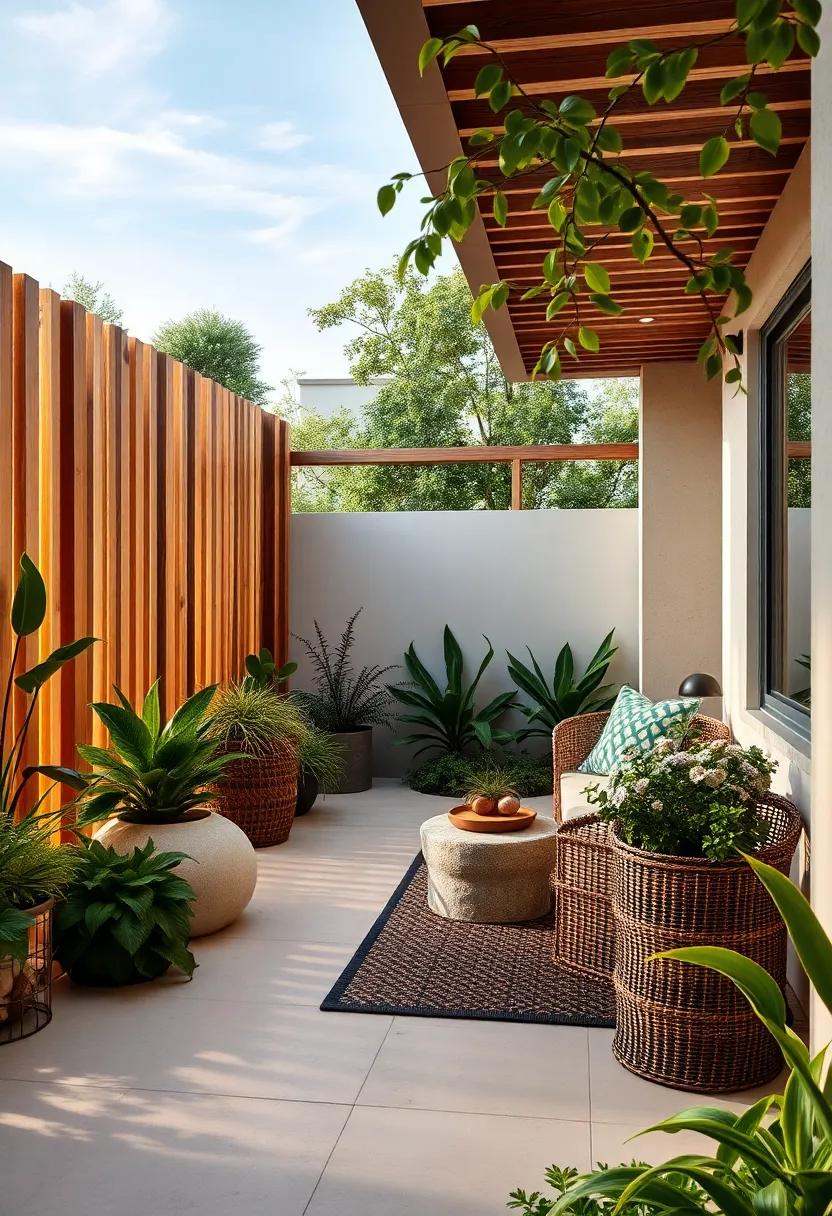
As we stand on the threshold of a greener future, the incorporation of technology in fencing solutions is paving the way for breakthroughs in both sustainability and functionality. Advances in materials science have given rise to innovative, eco-friendly options such as bamboo, reclaimed wood, and composite fencing, which not only enhance the aesthetic quality of gardens but also minimize environmental impact. Smart fencing solutions are now becoming commonplace, with integrated features such as solar-powered lights, motion sensors, and automated irrigation systems that streamline garden maintenance while promoting biodiversity.
The next wave of gardening that harmonizes with technology involves the strategic use of sensors and IoT devices to monitor soil moisture levels and weather conditions. This real-time data helps gardeners make informed decisions, reducing the resource usage that often accompanies traditional gardening practices. To further this initiative, sustainable fencing designs might include:
- Wildlife-friendly gaps to support local fauna
- Vertical gardens that utilize fence space for plant growth
- Living fences planted with native species
As these trends emerge, garden fencing is not merely a boundary, but a living element of ecological stewardship celebrated in every outdoor space.
Concluding Remarks
As we close this exploration of the evolving landscape of eco-friendly garden fences,it’s clear that embracing nature isn’t just a trend; it’s a harmonious commitment to sustainability and beauty. From renewable materials that breathe life into our outdoor spaces to designs that minimize our ecological footprint, these innovations invite us to redefine the boundaries of our gardens. As you consider ways to incorporate these thoughtful trends into your own landscape, remember that each choice contributes not only to the aesthetics of your home but also to the well-being of our planet. By nurturing our environments with care, we cultivate a legacy of sustainability for generations to come. So, step out, breathe in, and let nature guide your next fence project—a seamless blend of form, function, and environmental stewardship awaits.
 decorifusta Garden and patio decoration inspiration
decorifusta Garden and patio decoration inspiration 